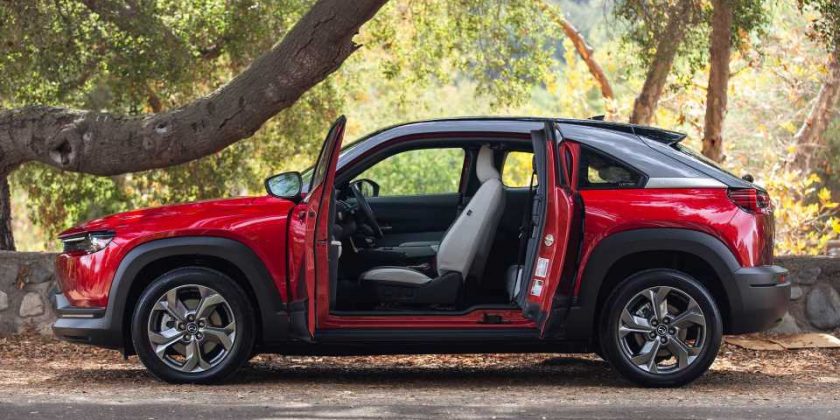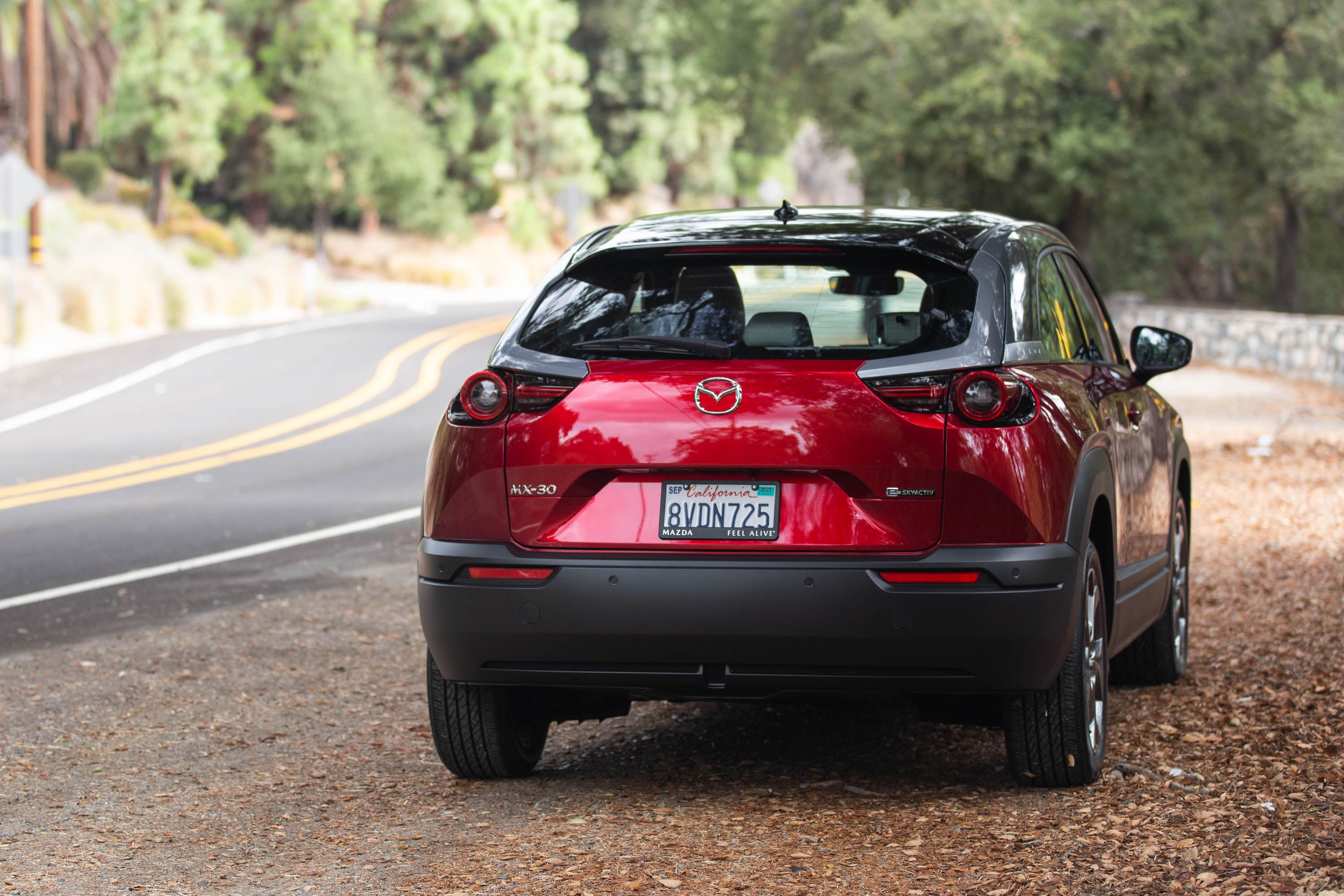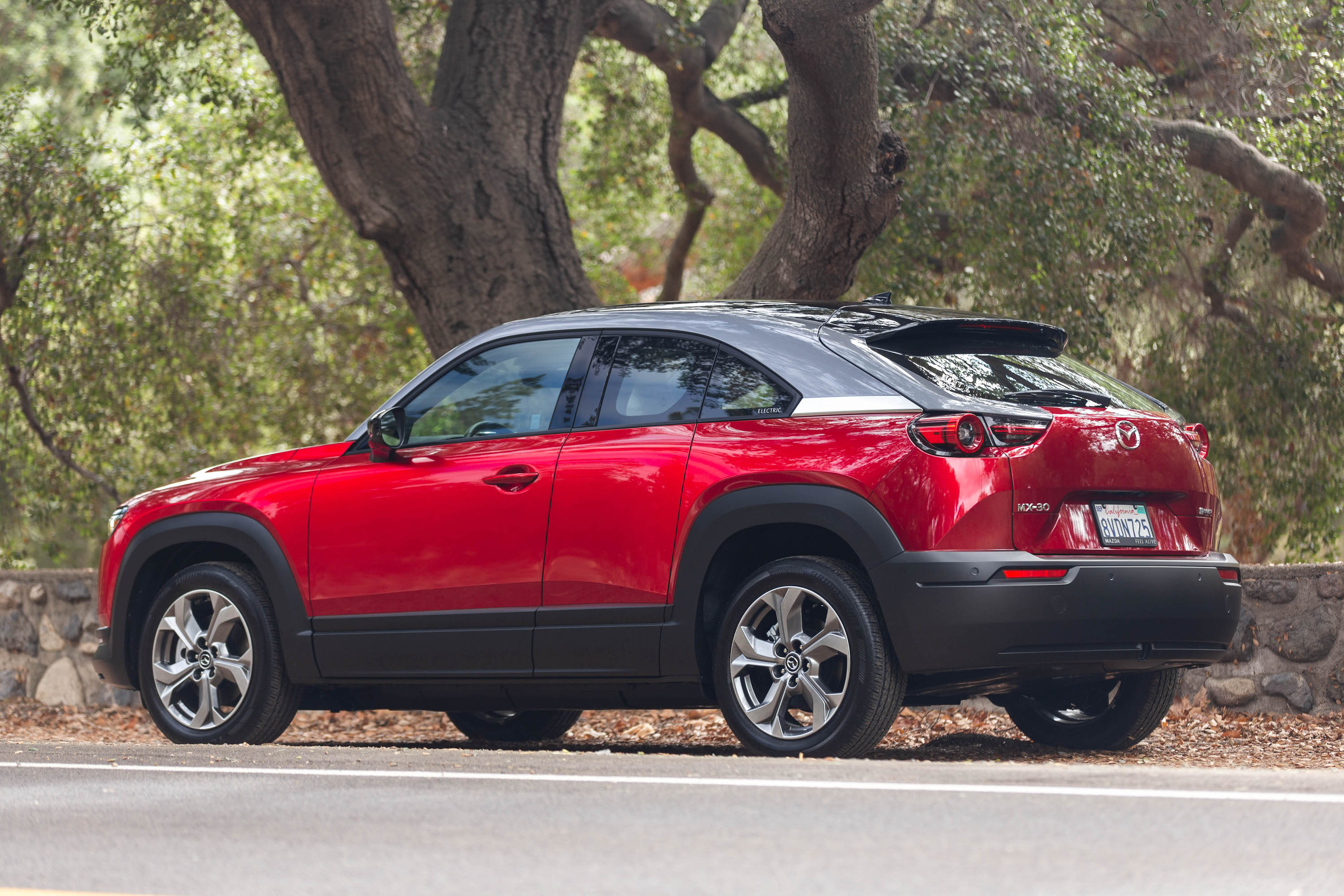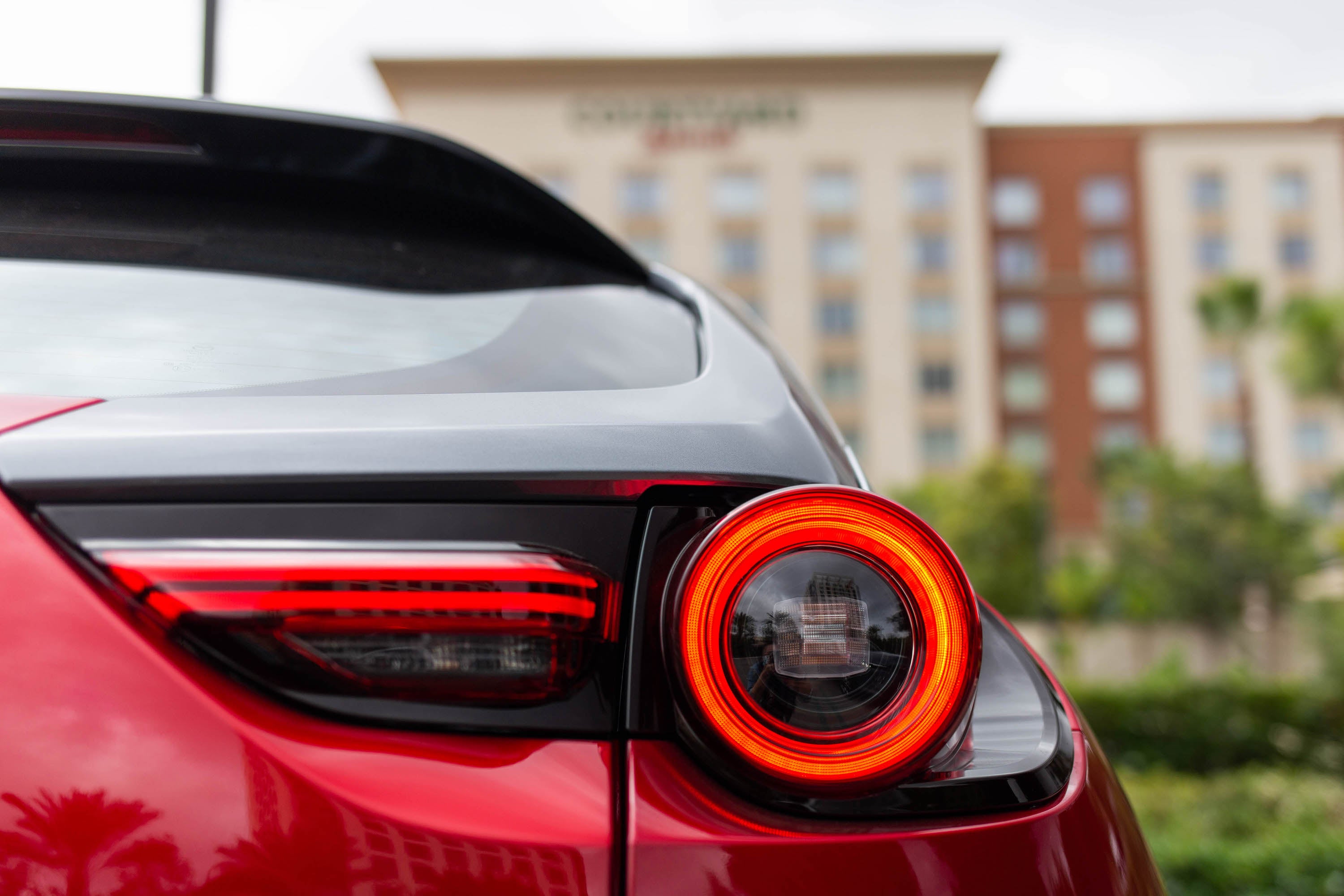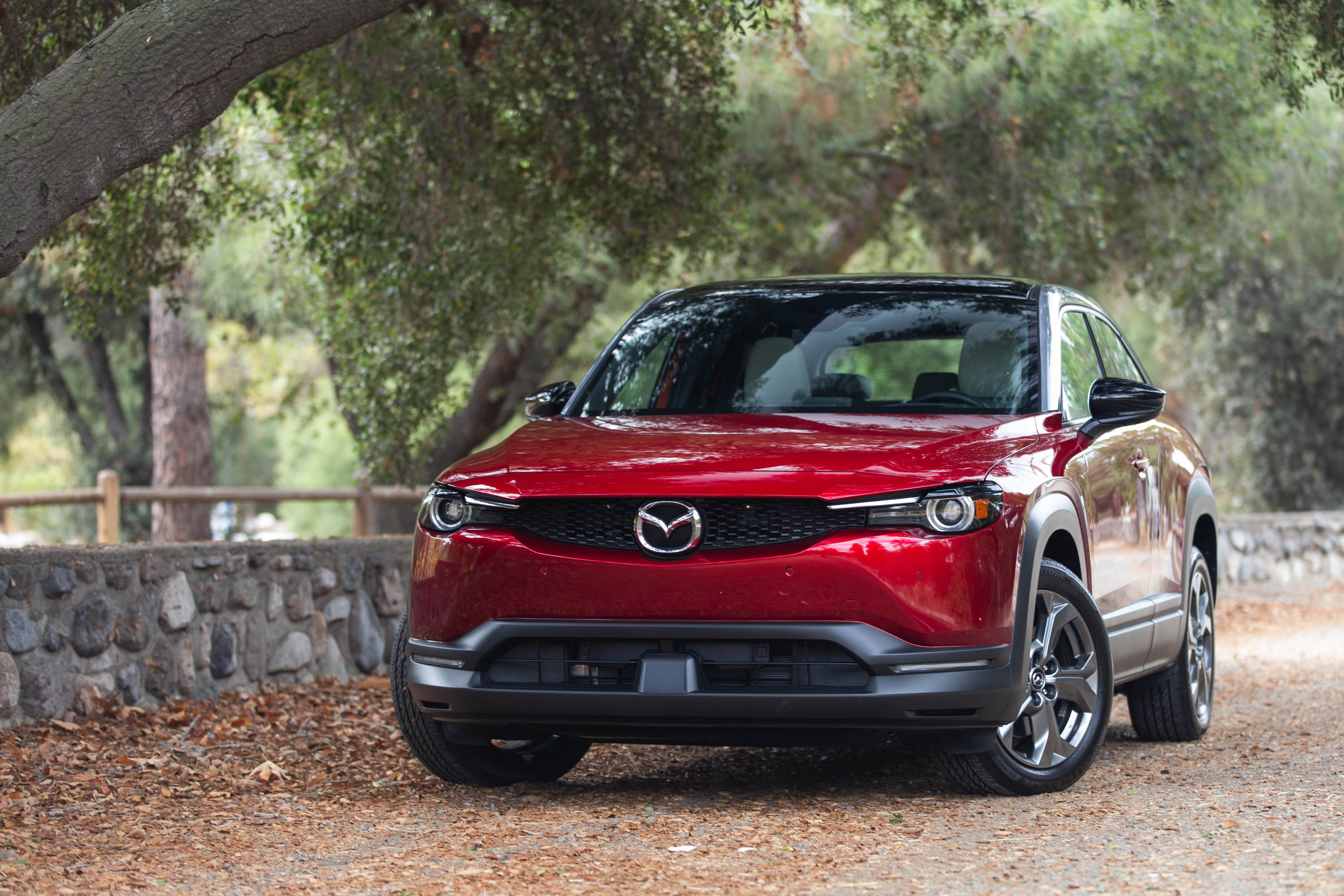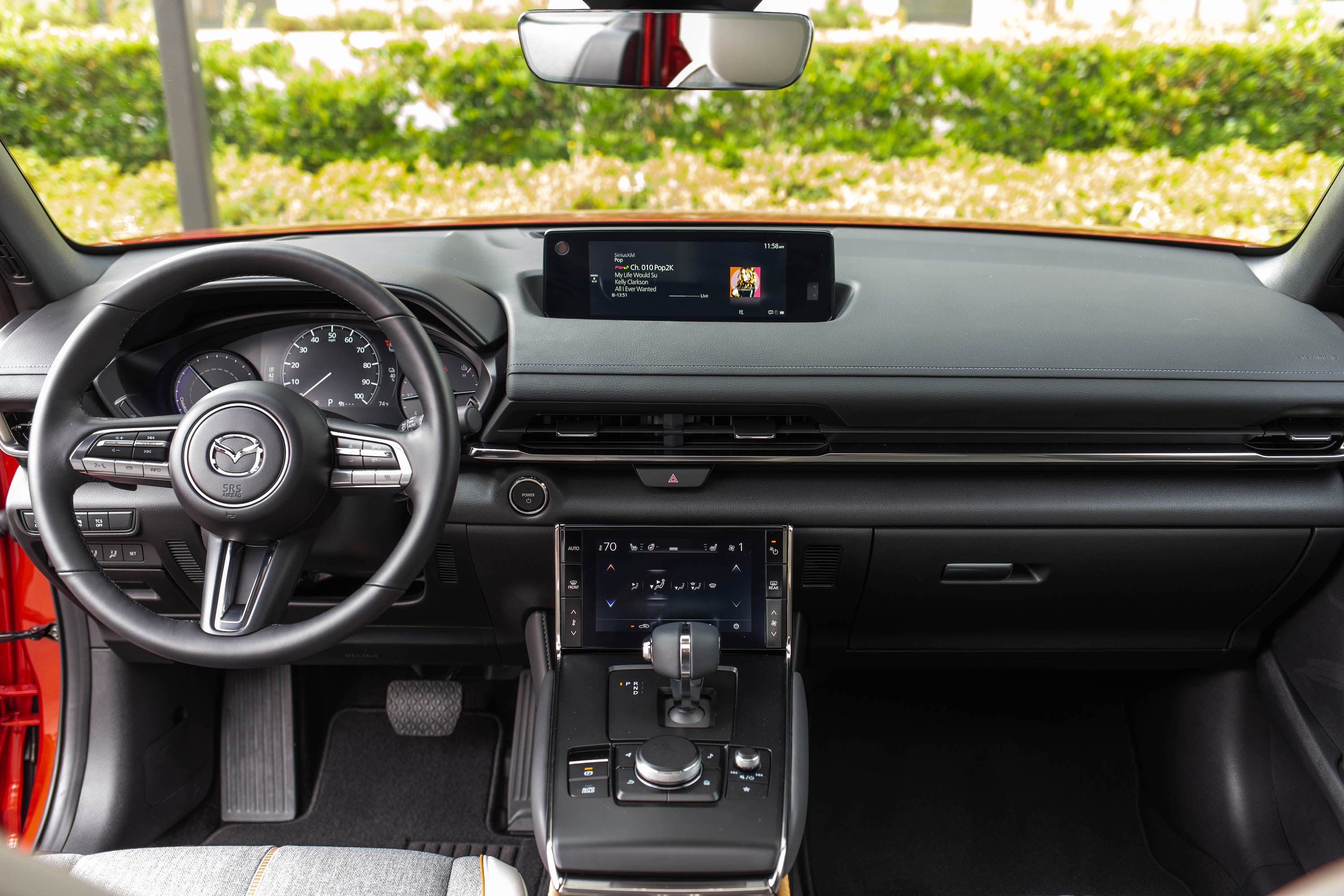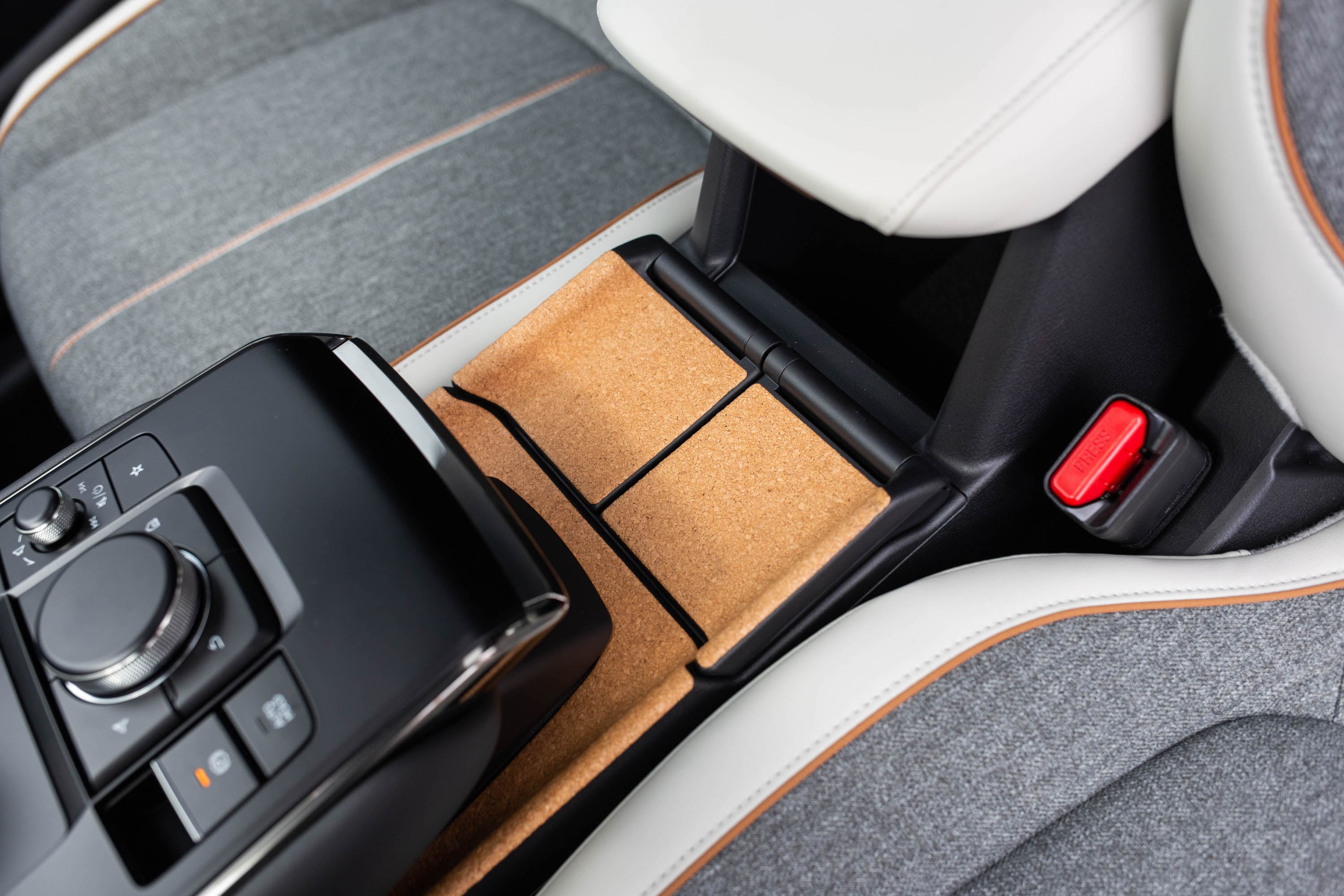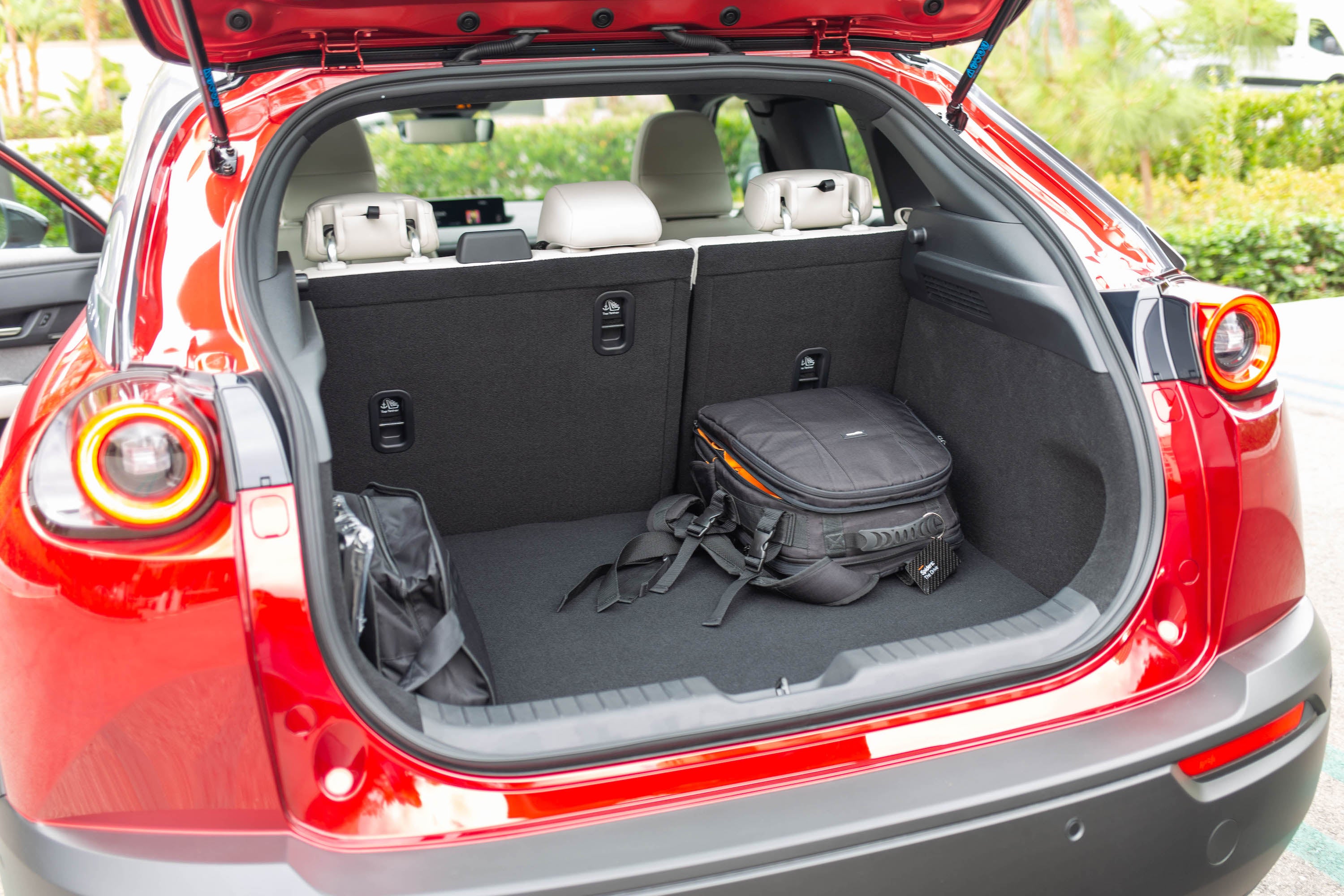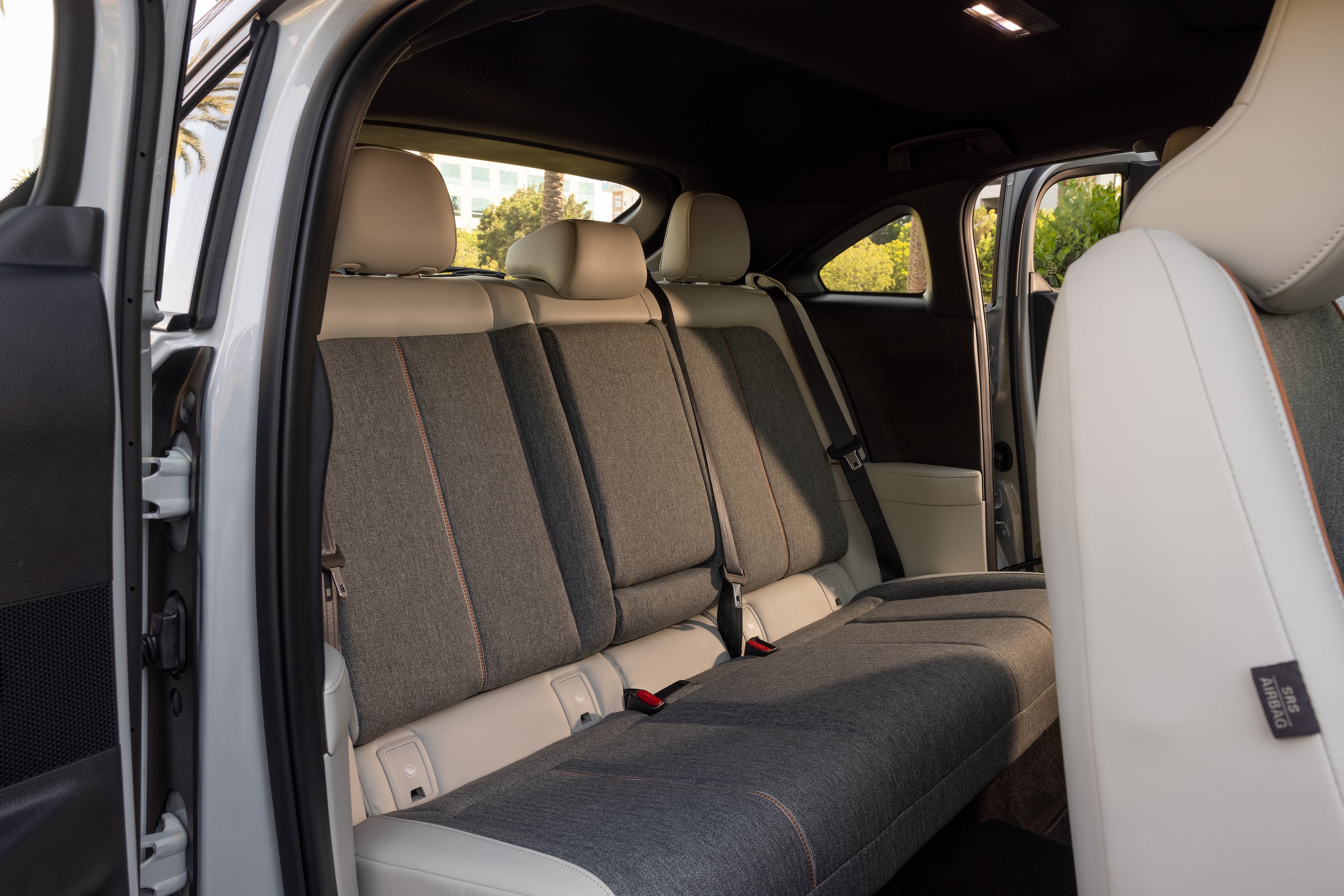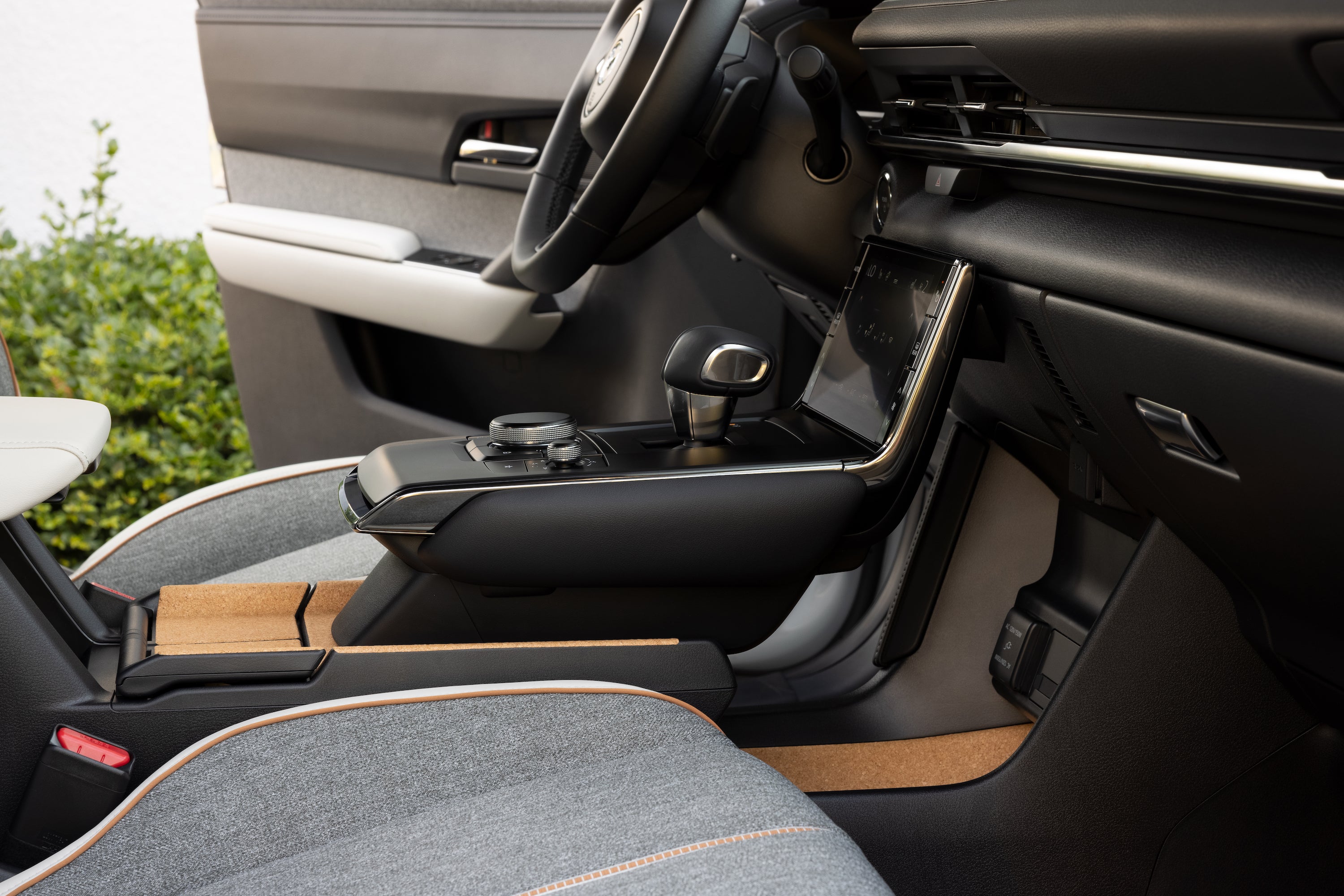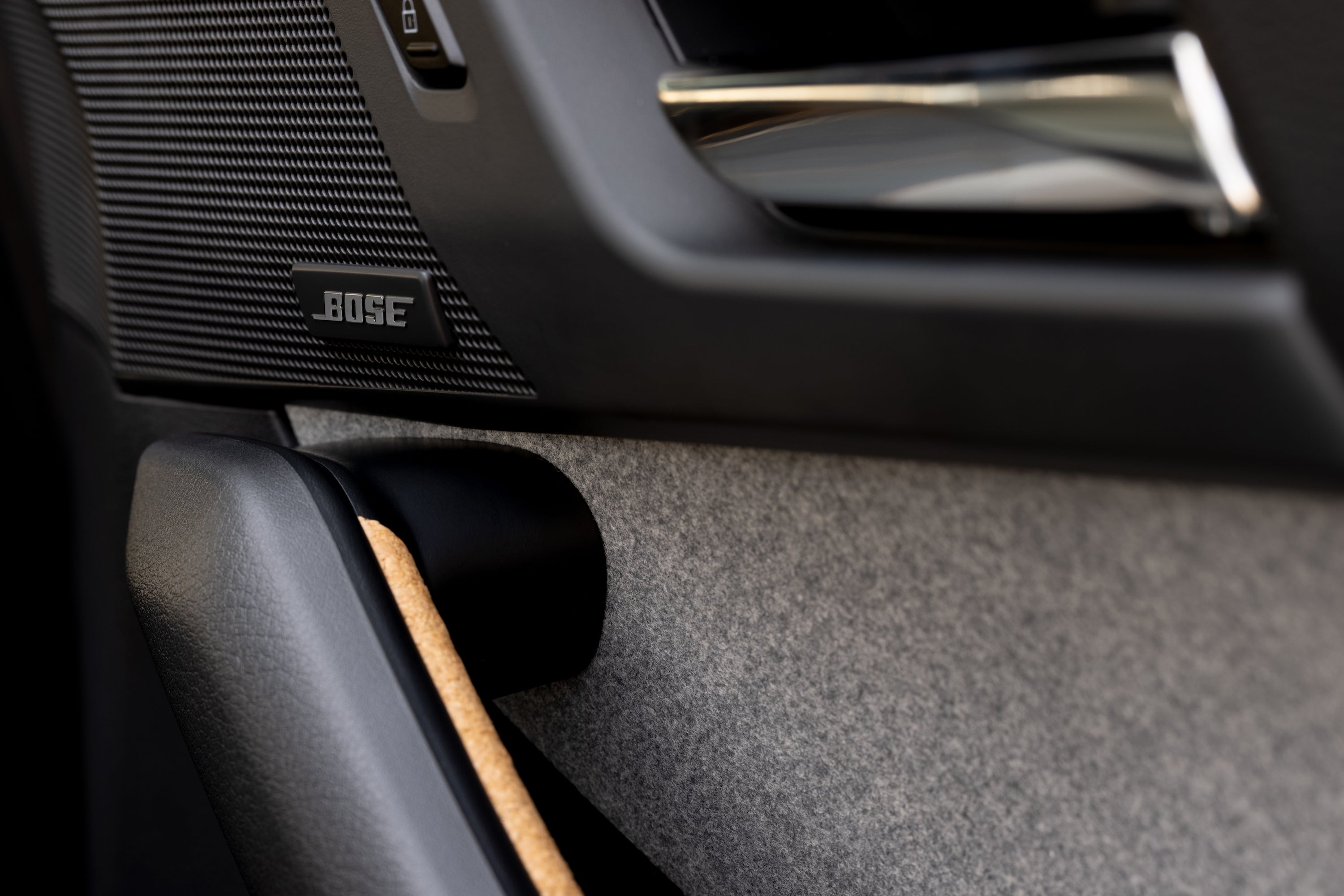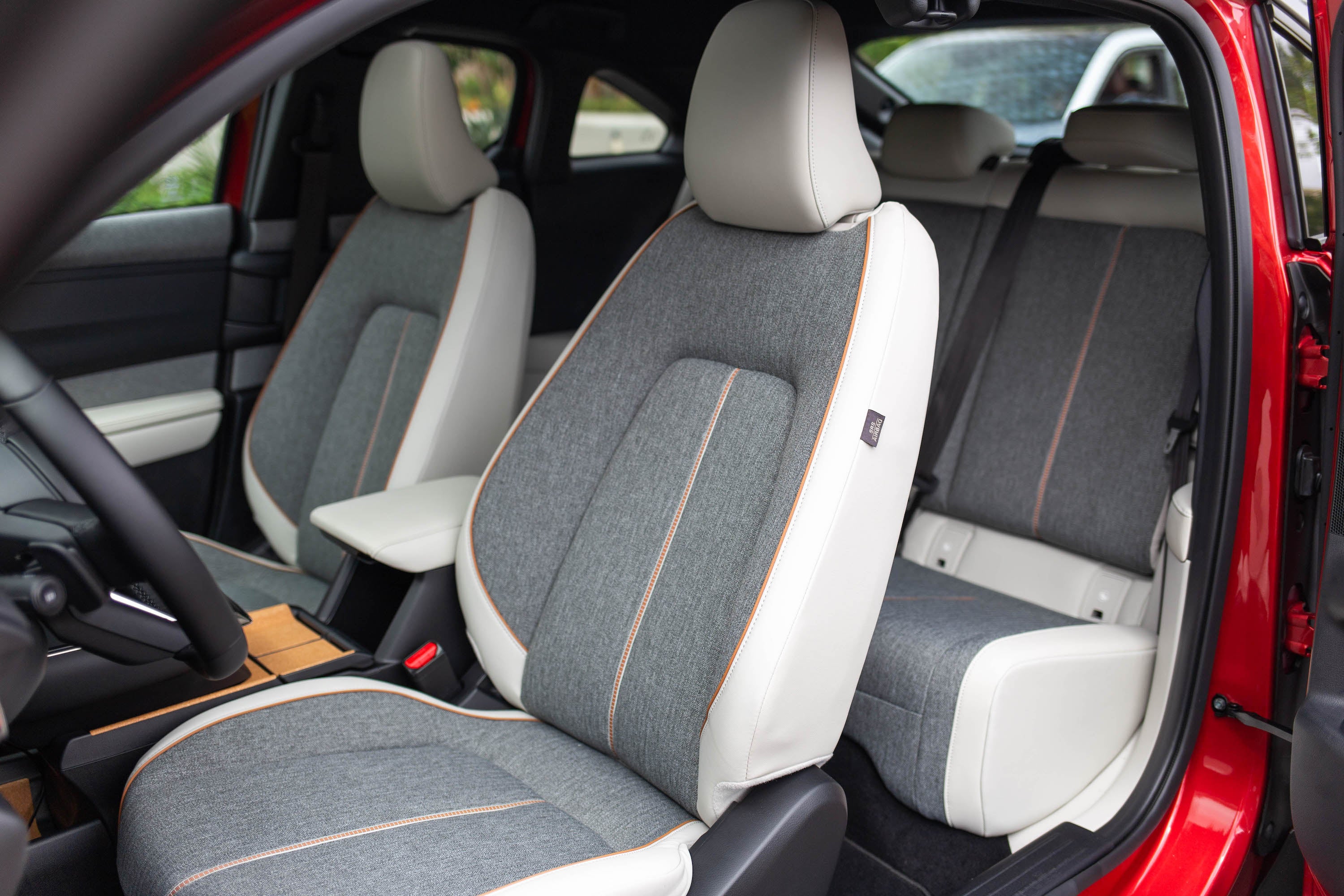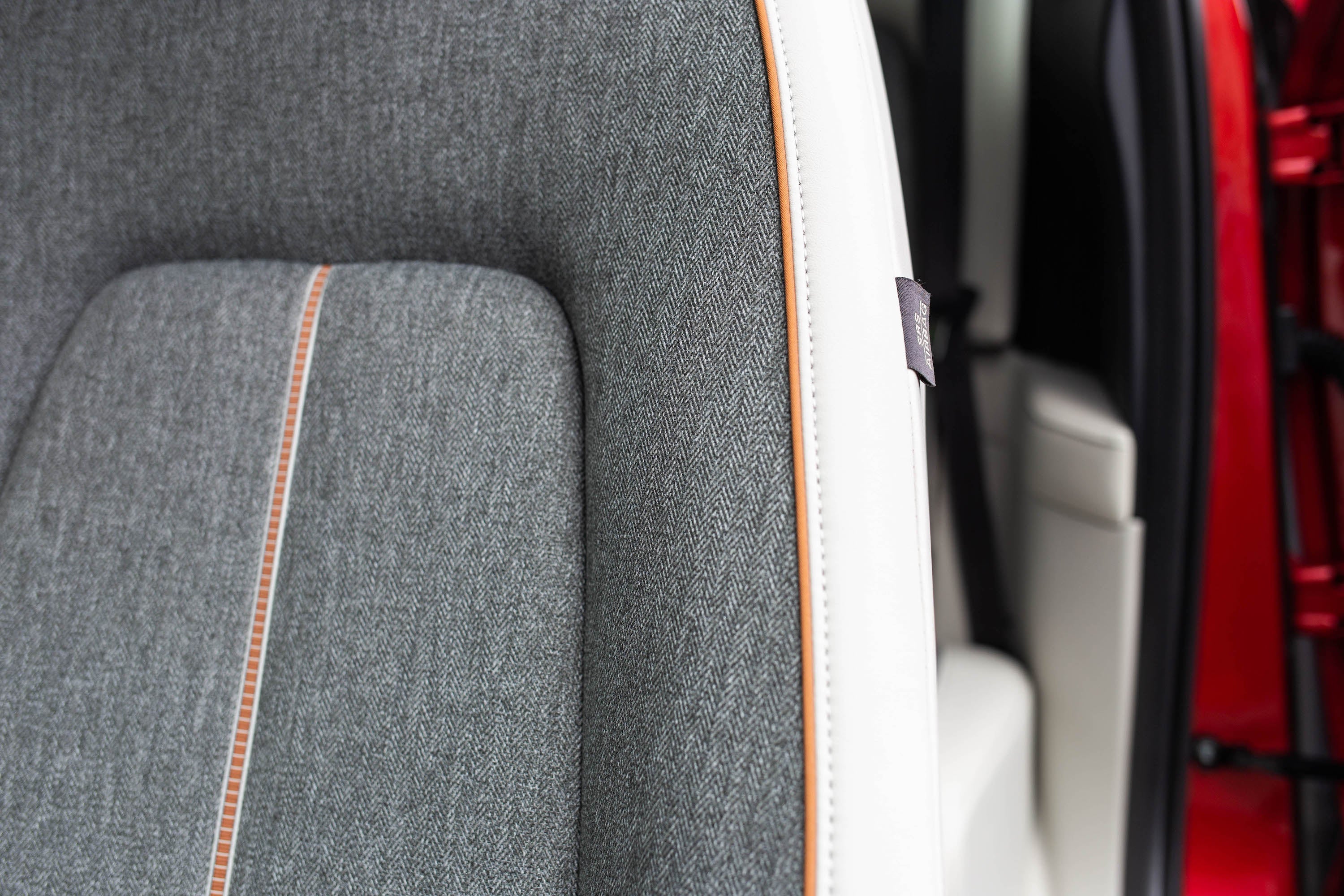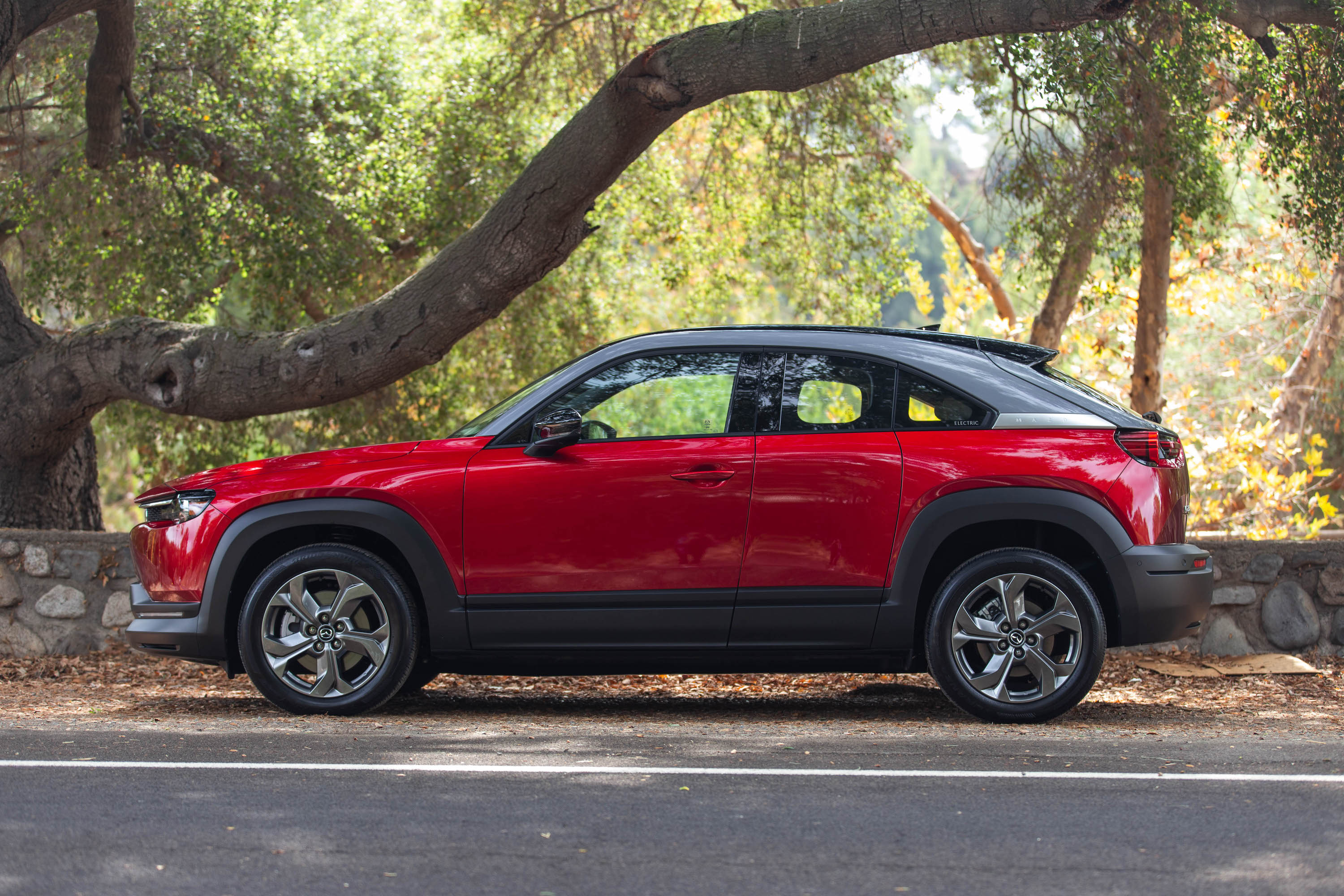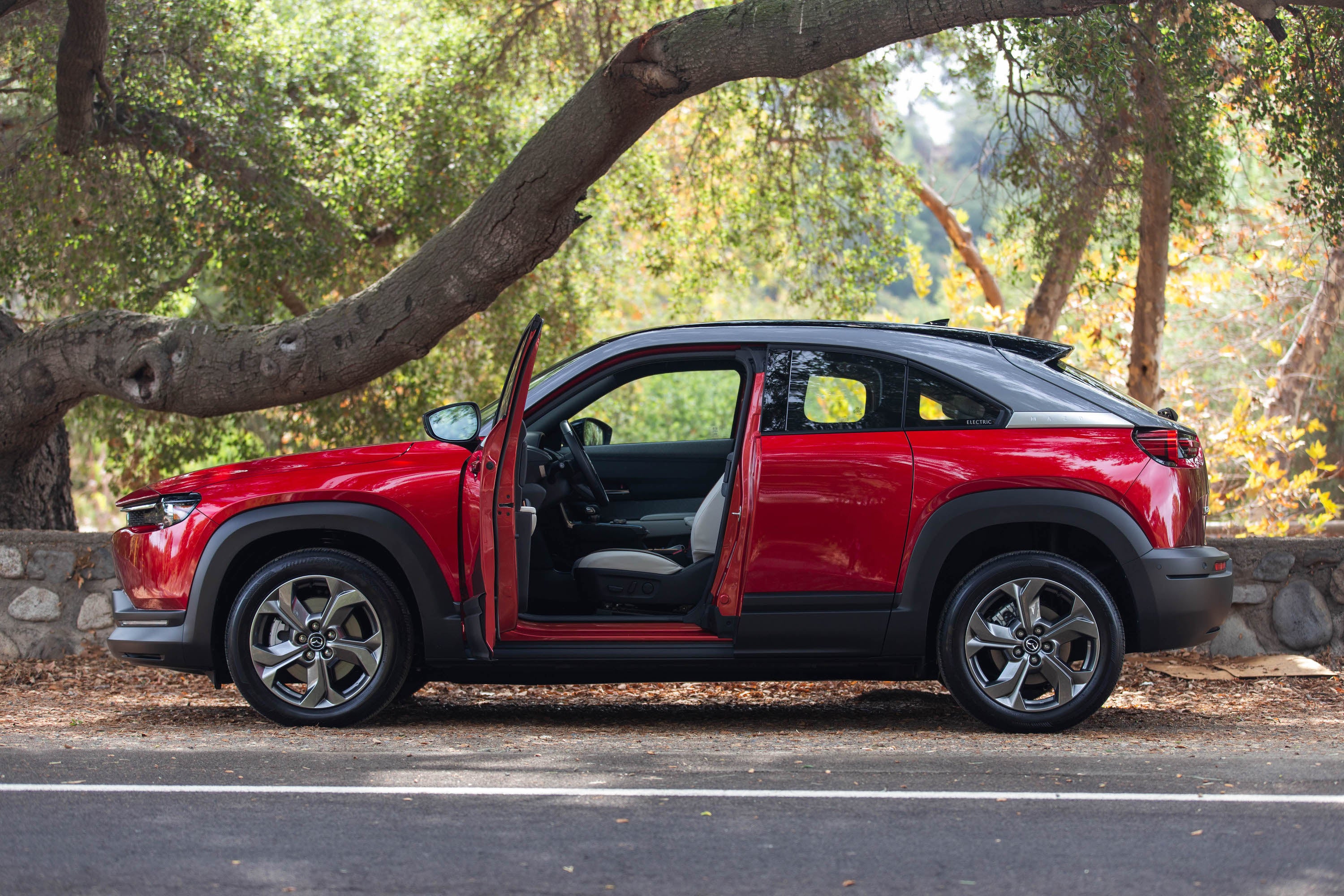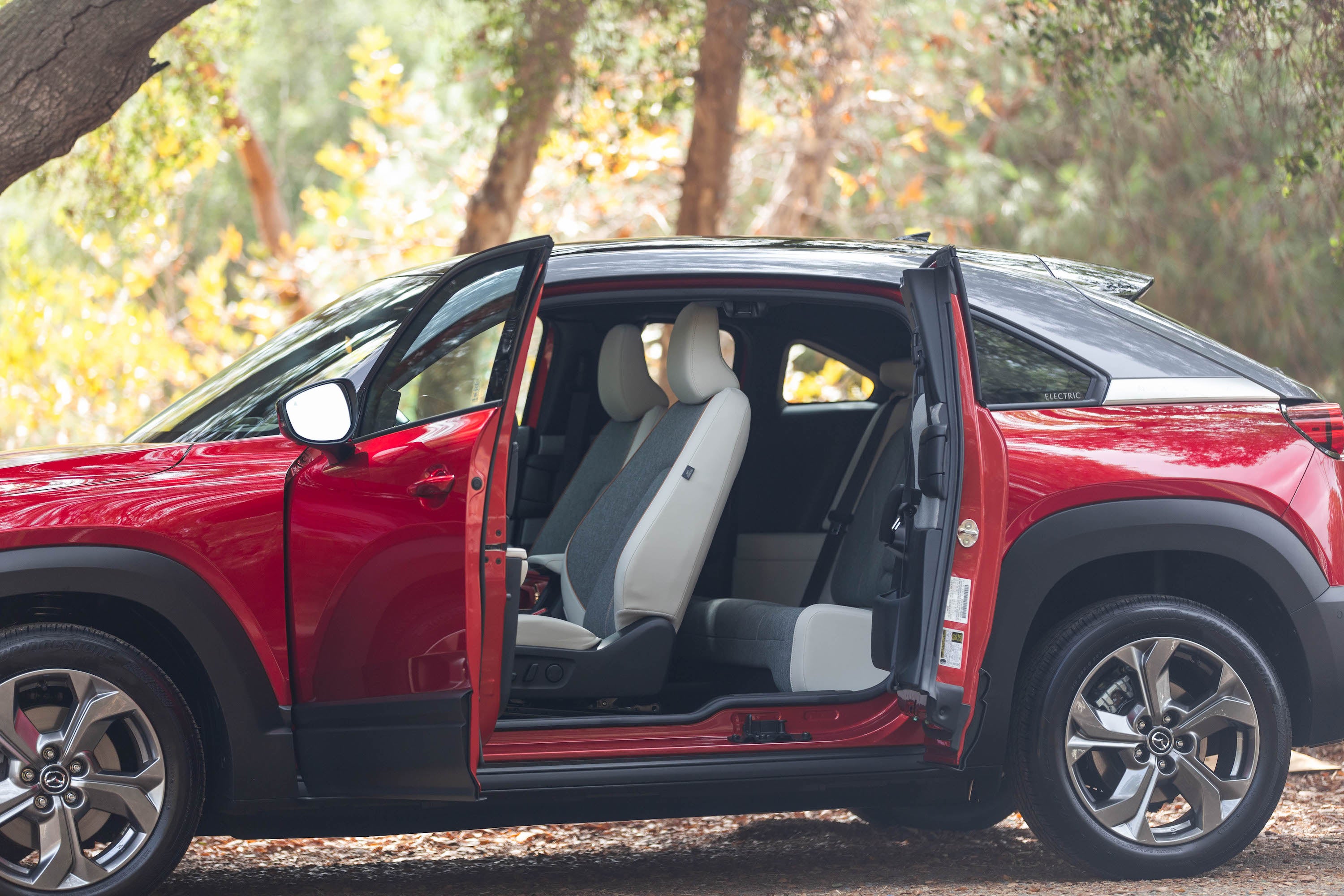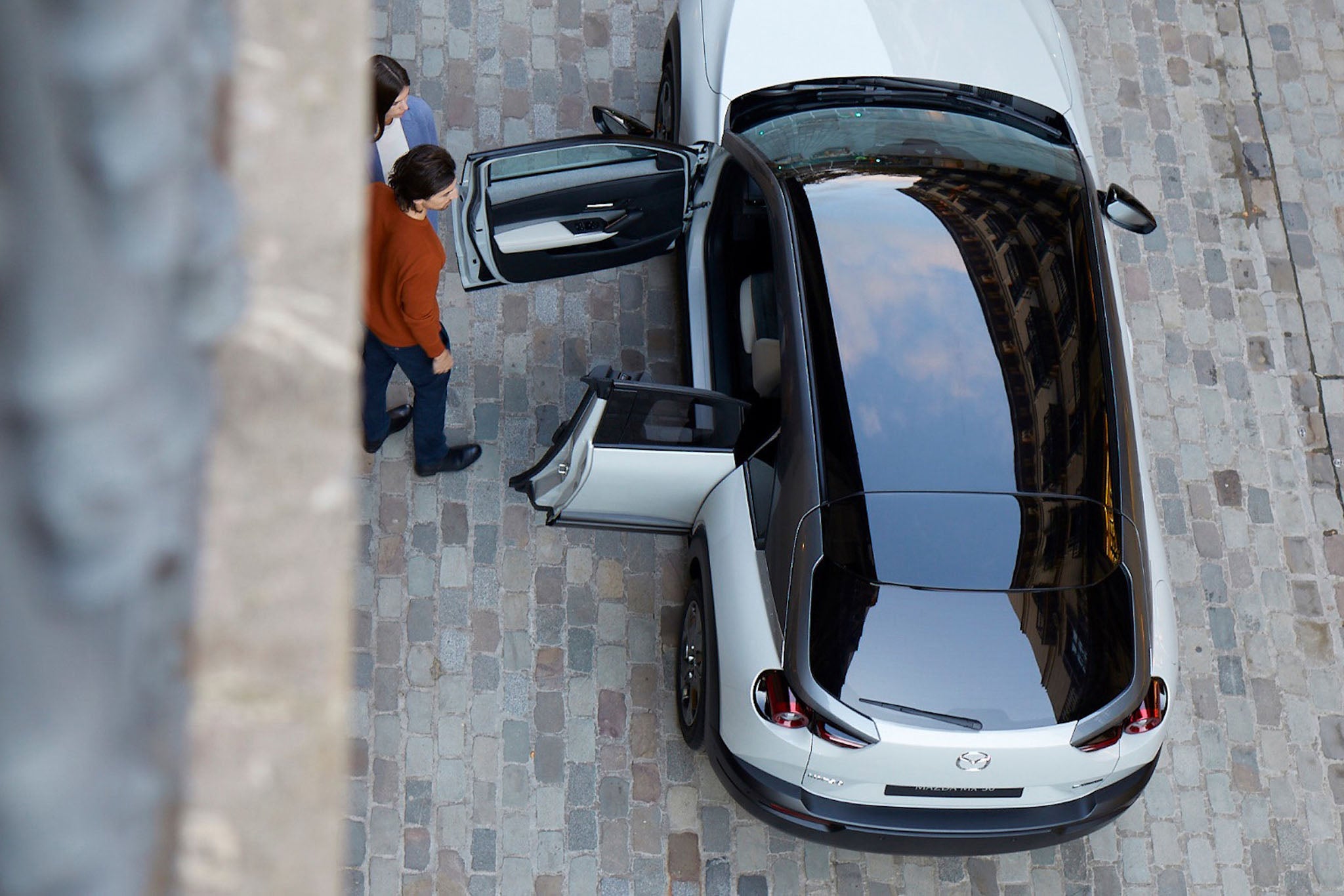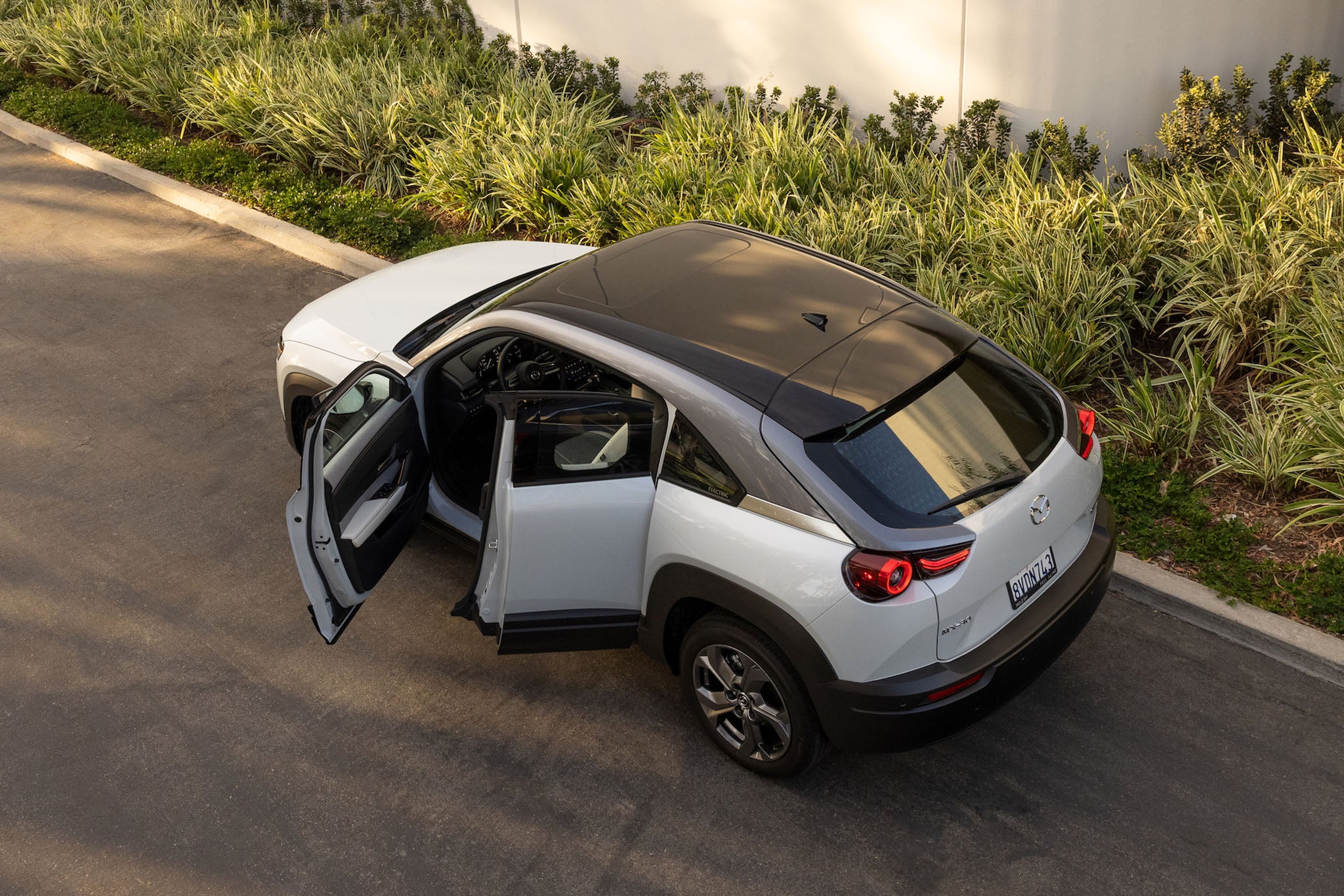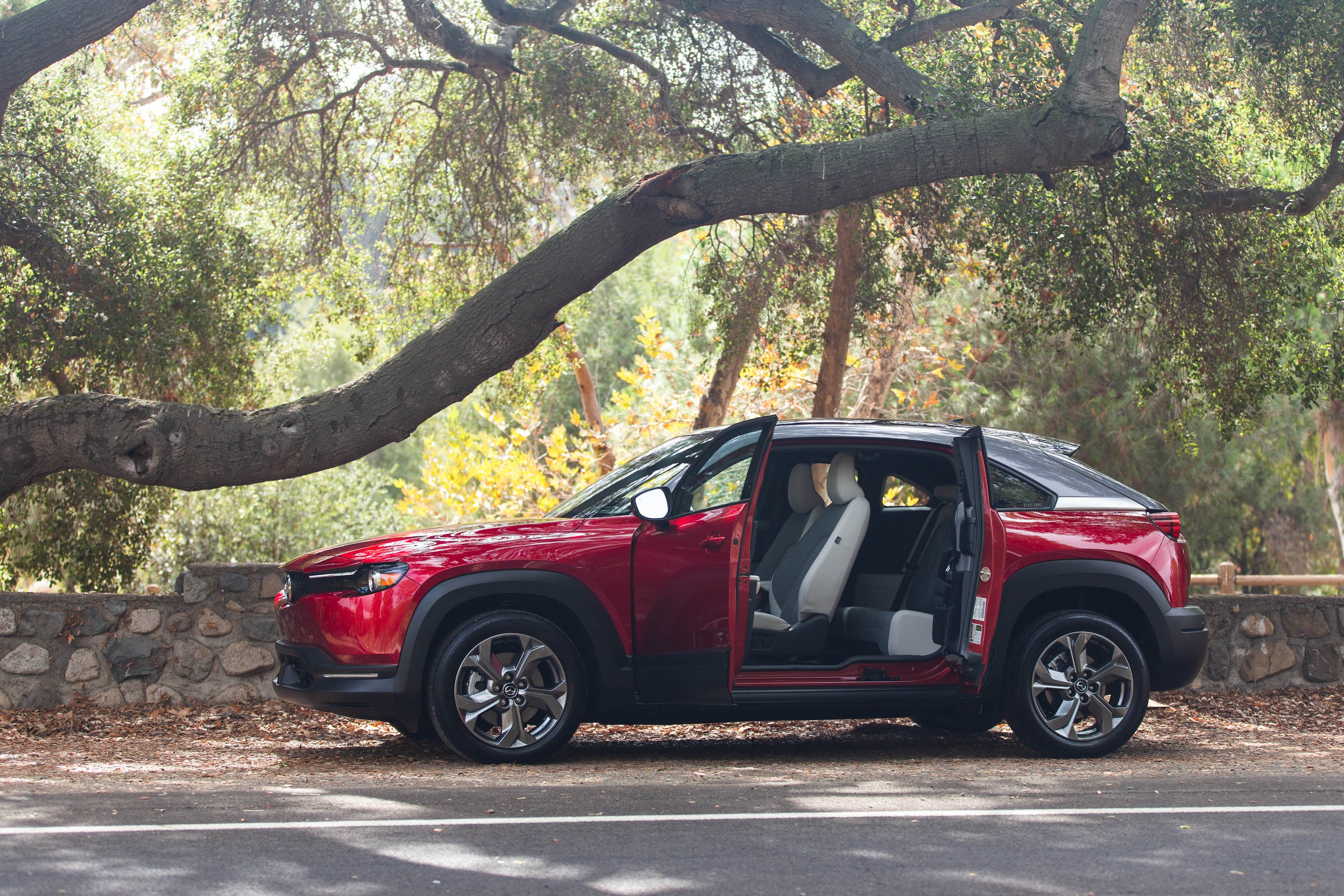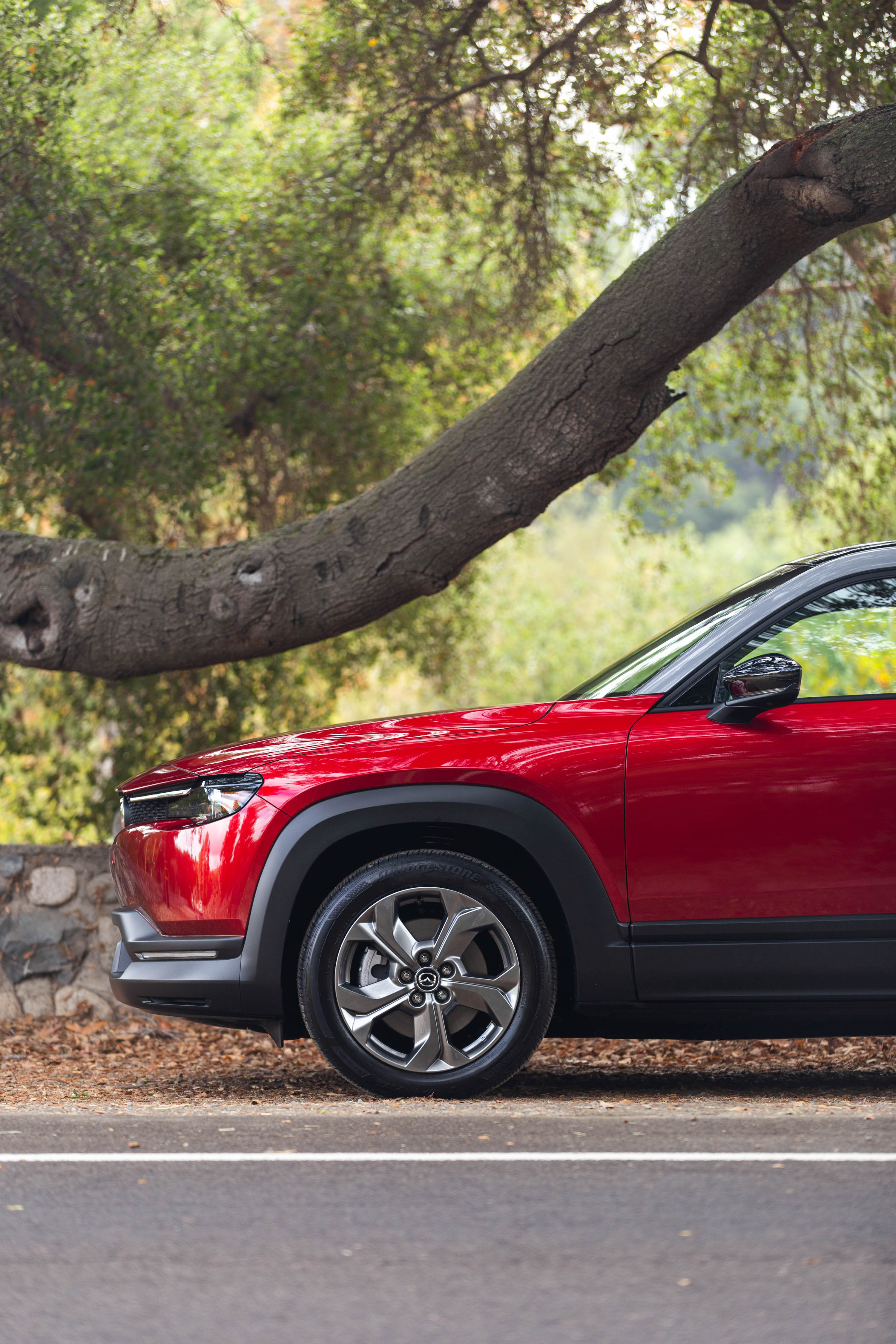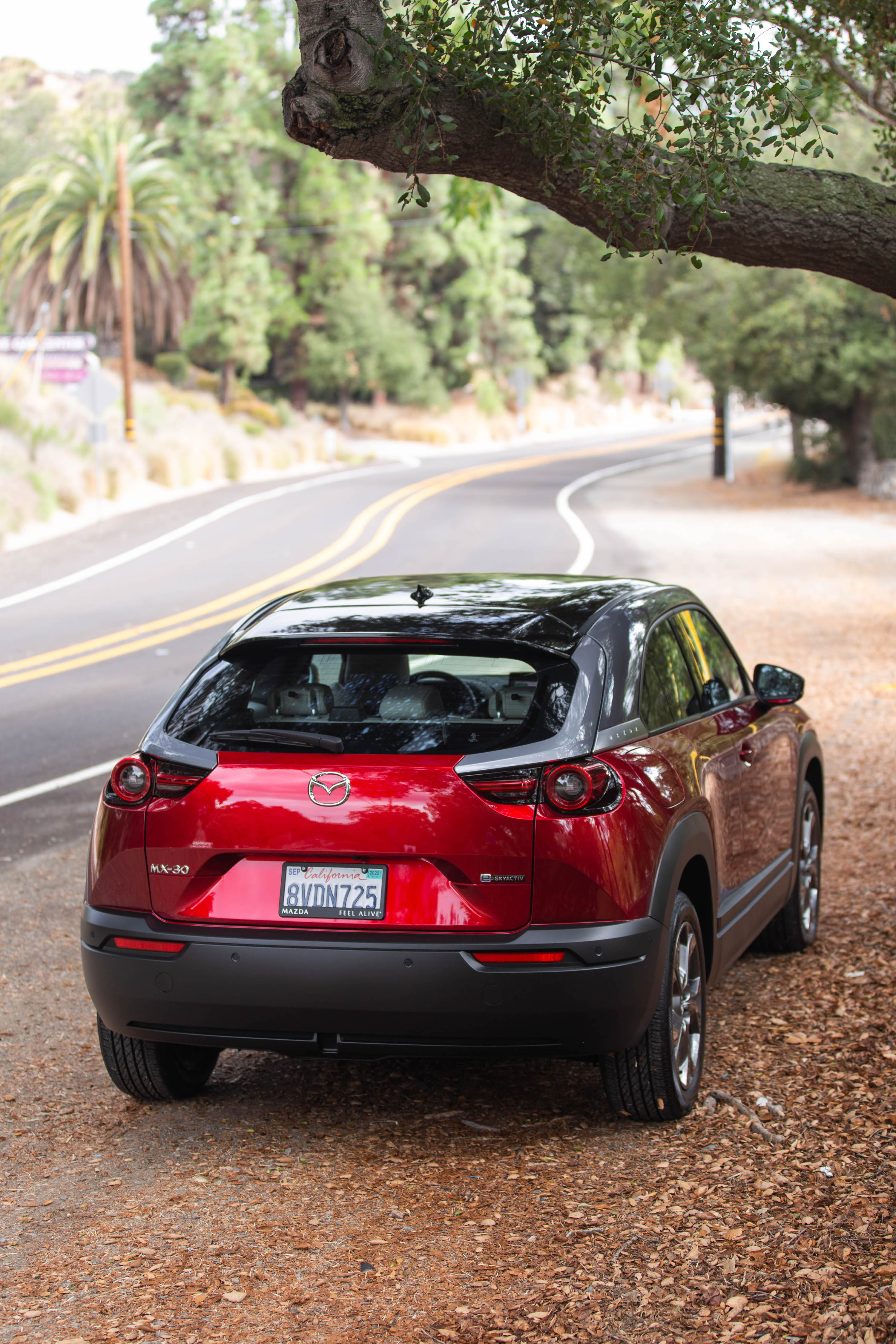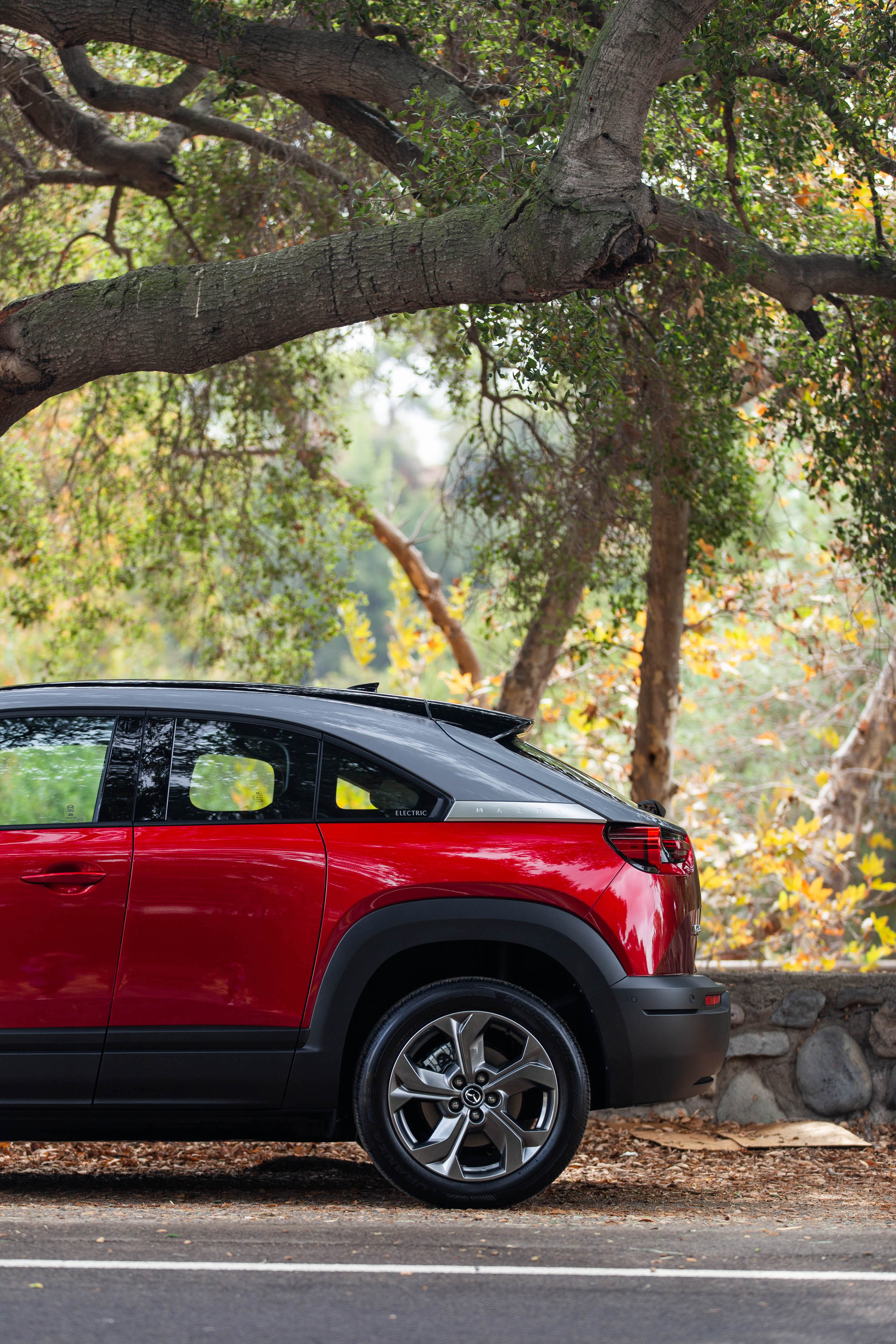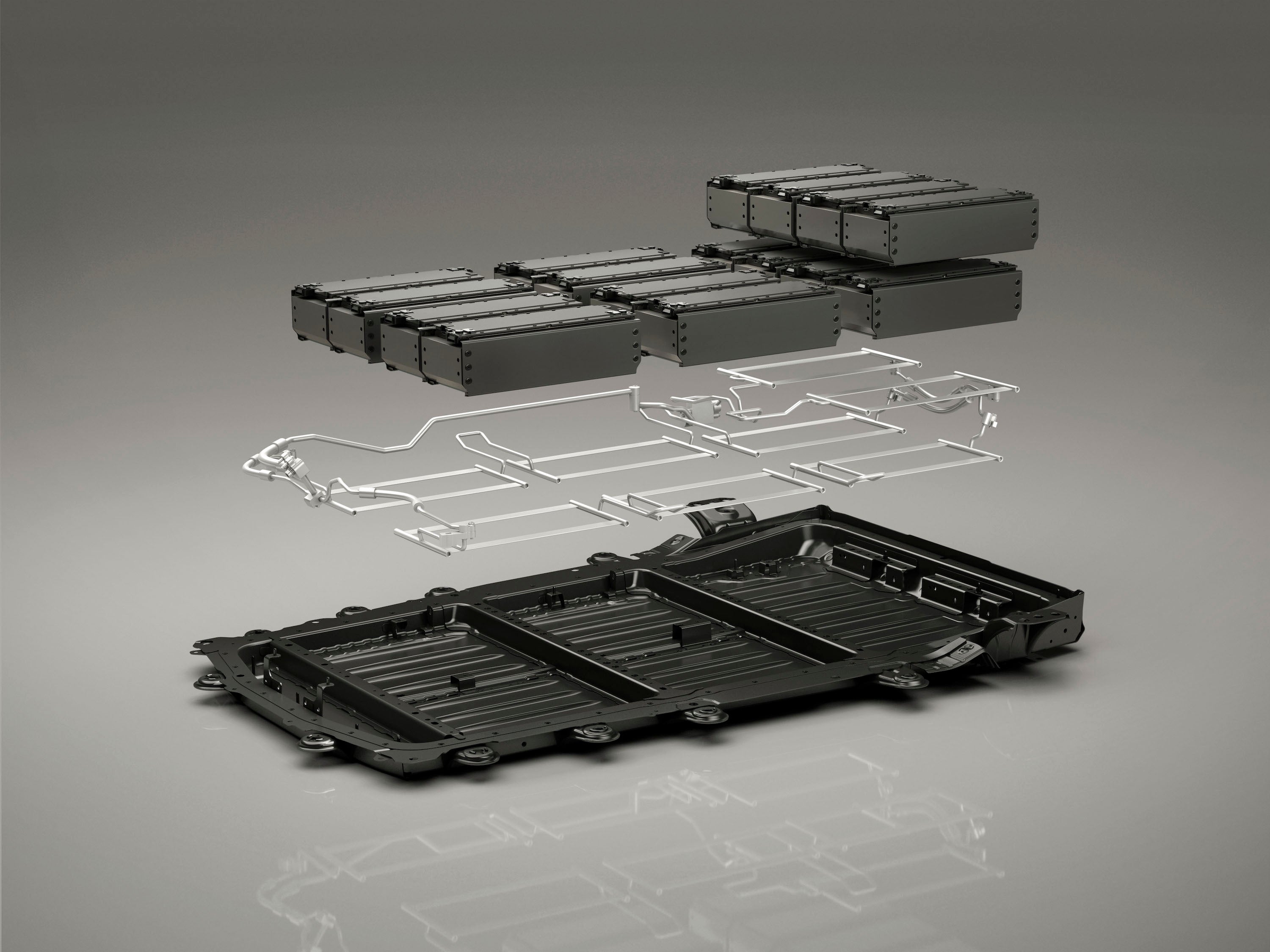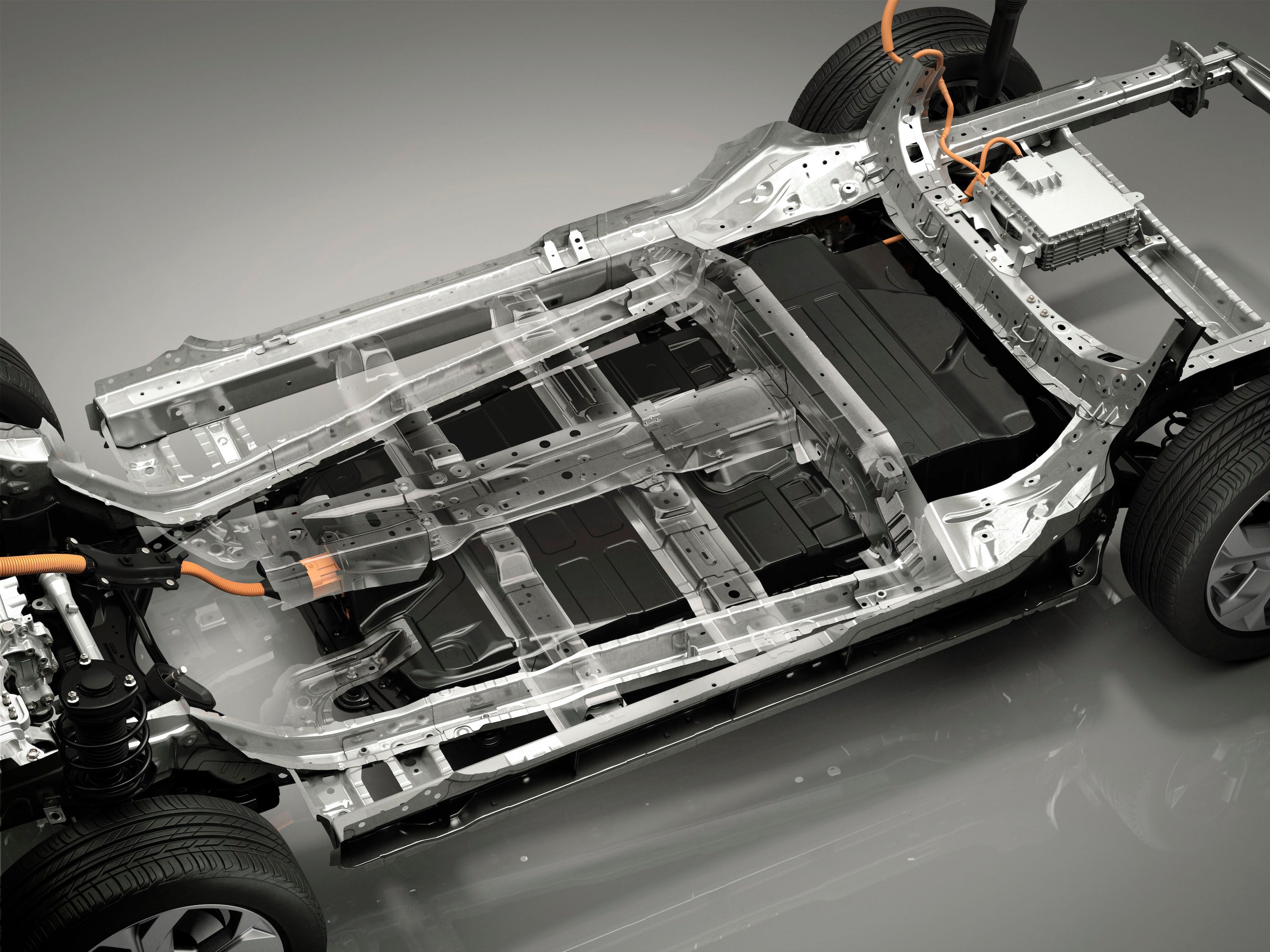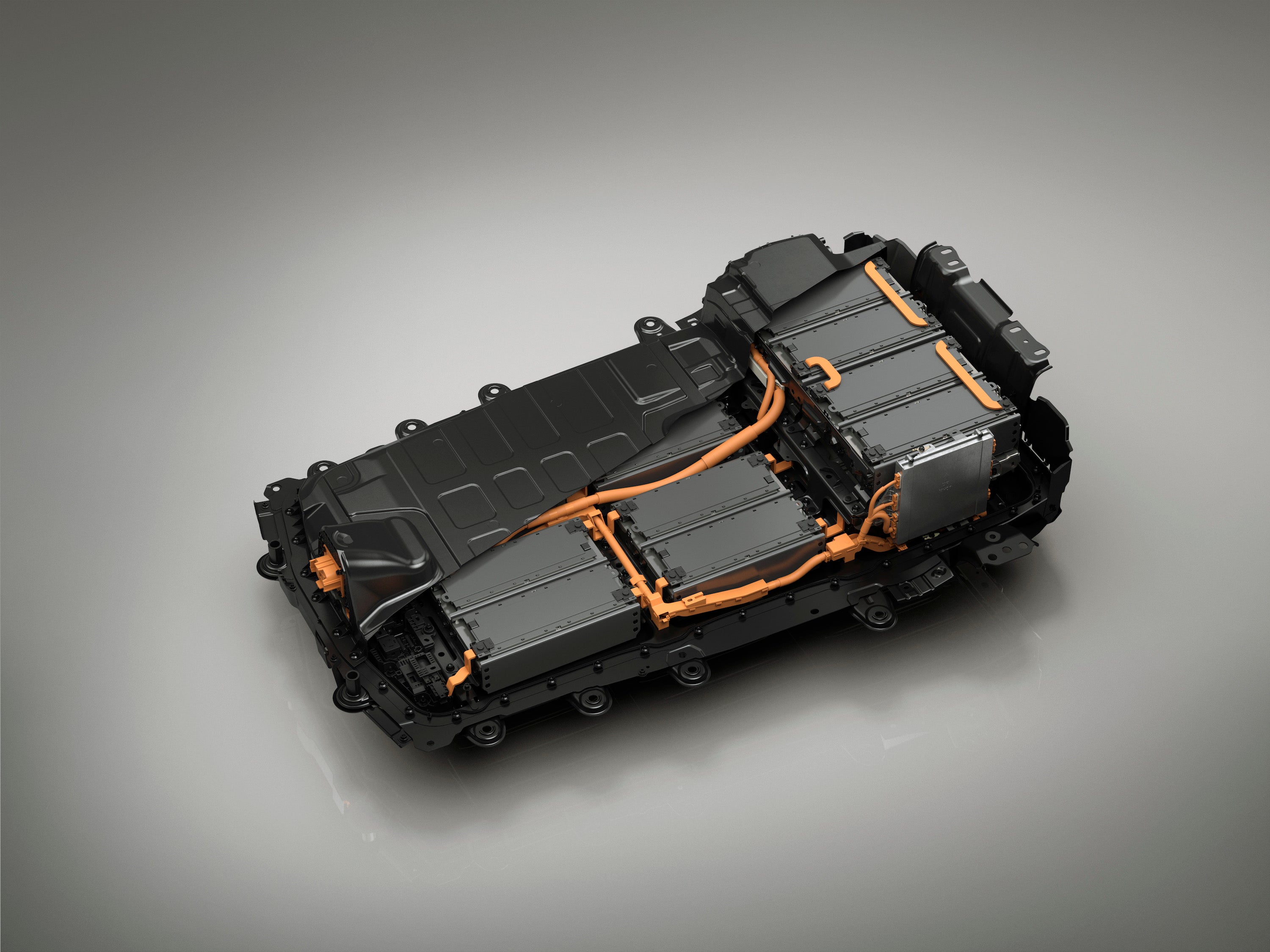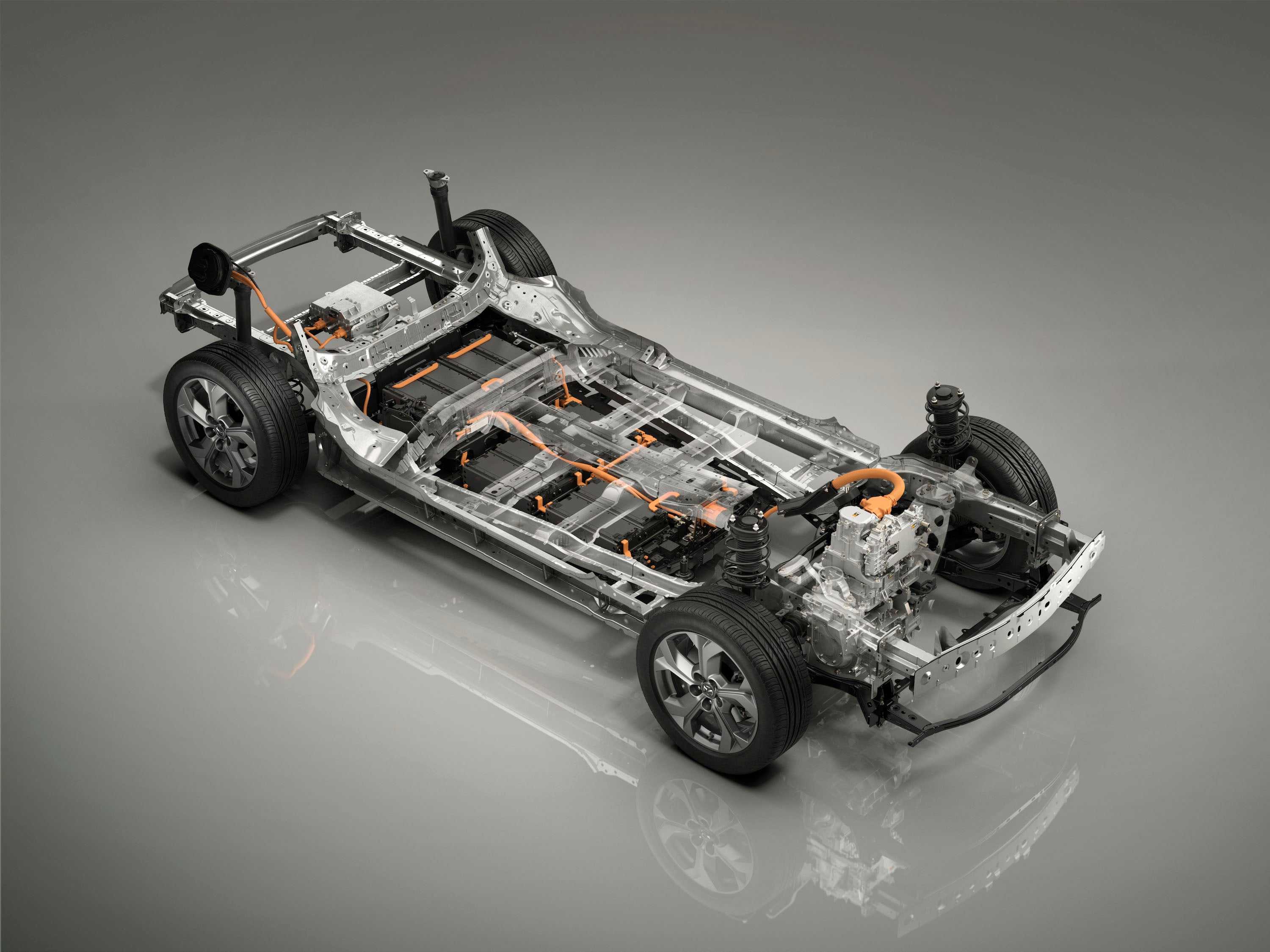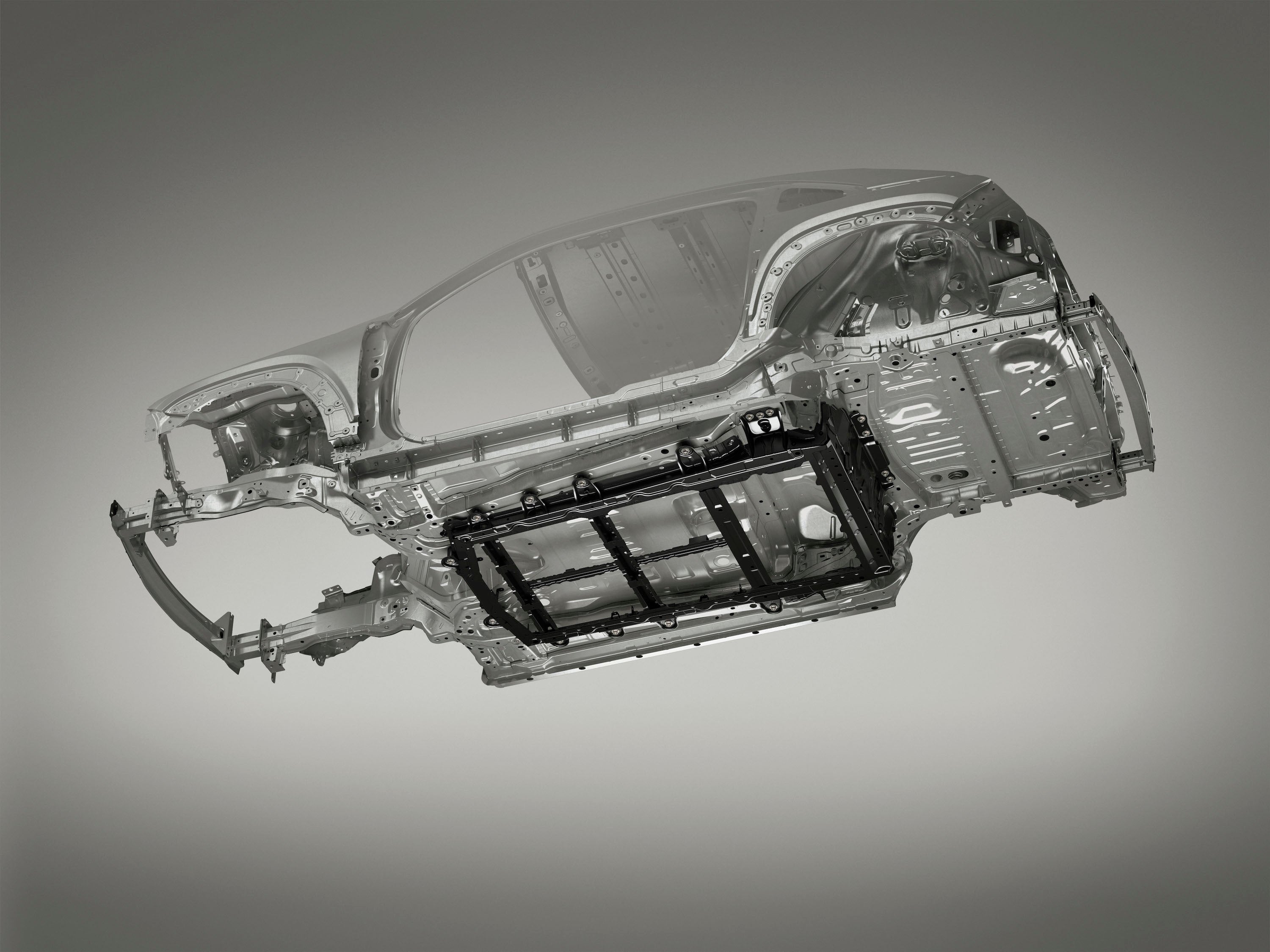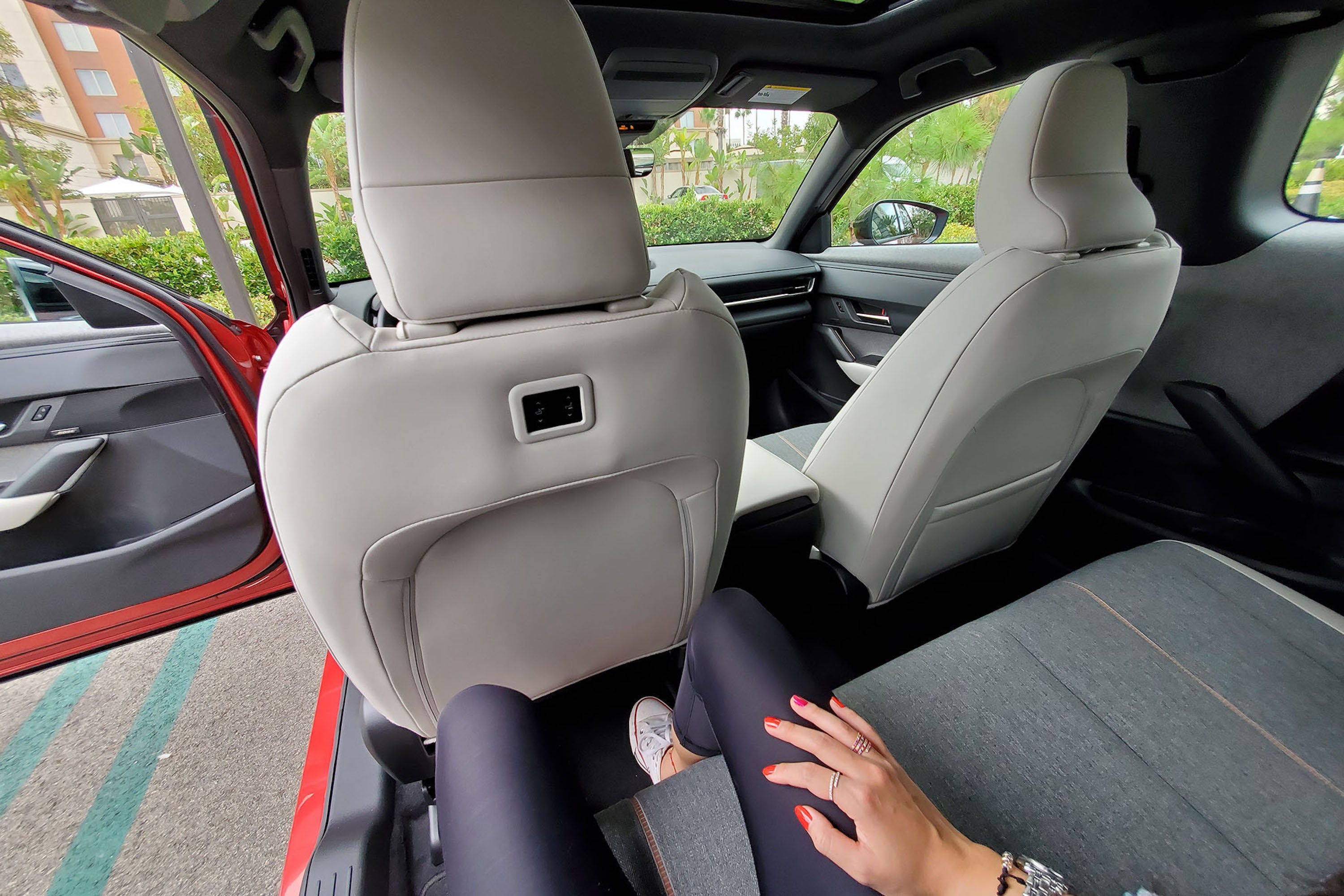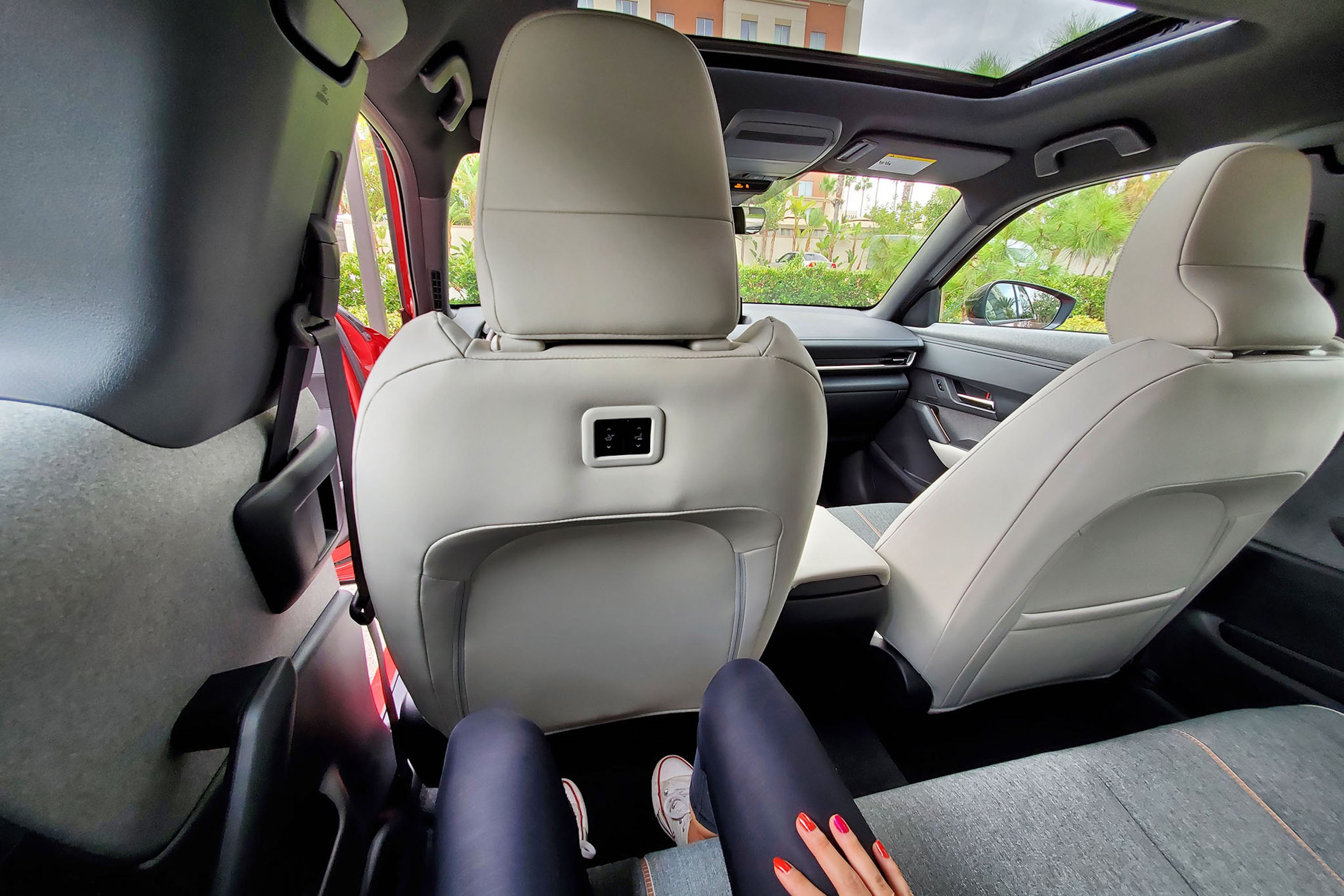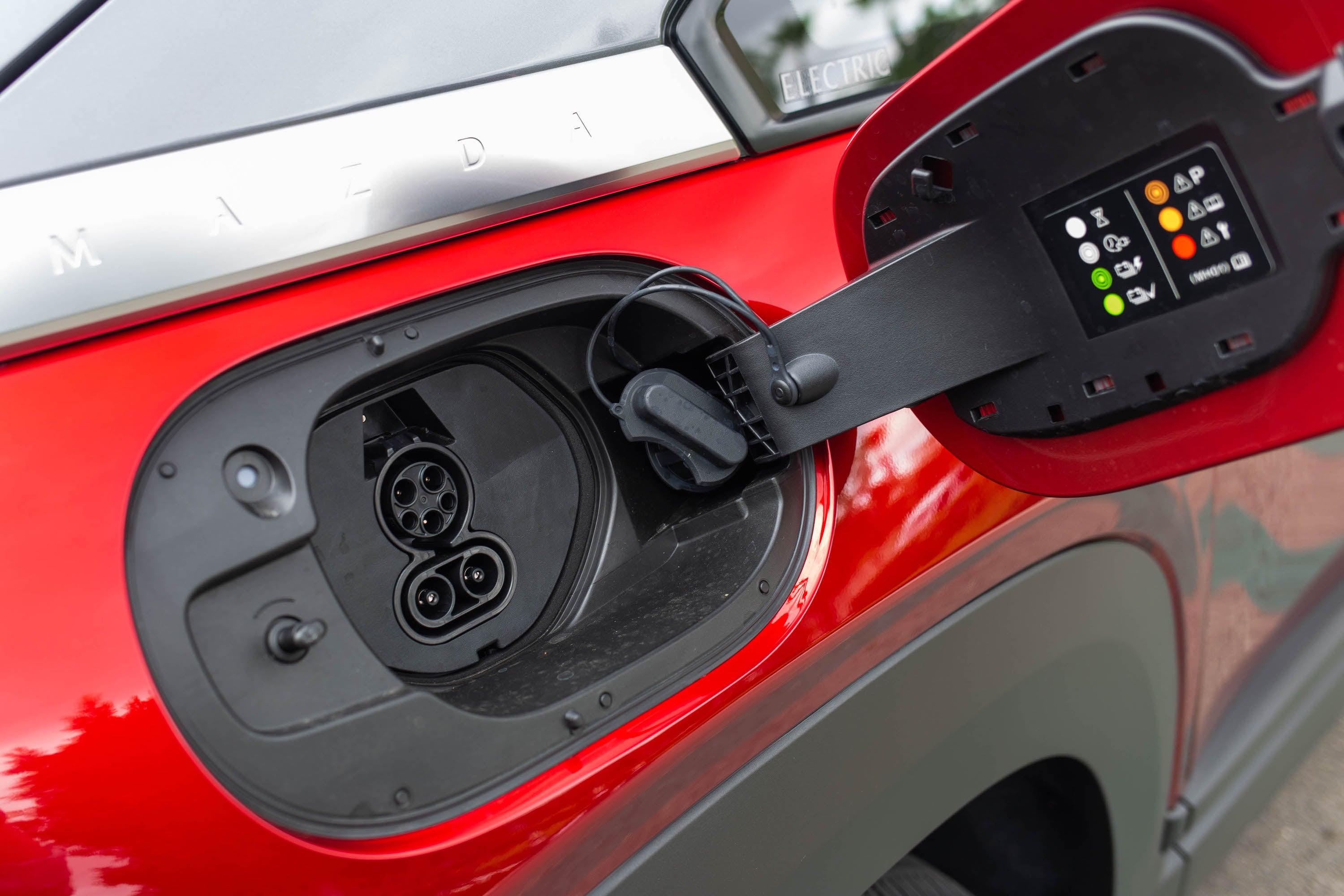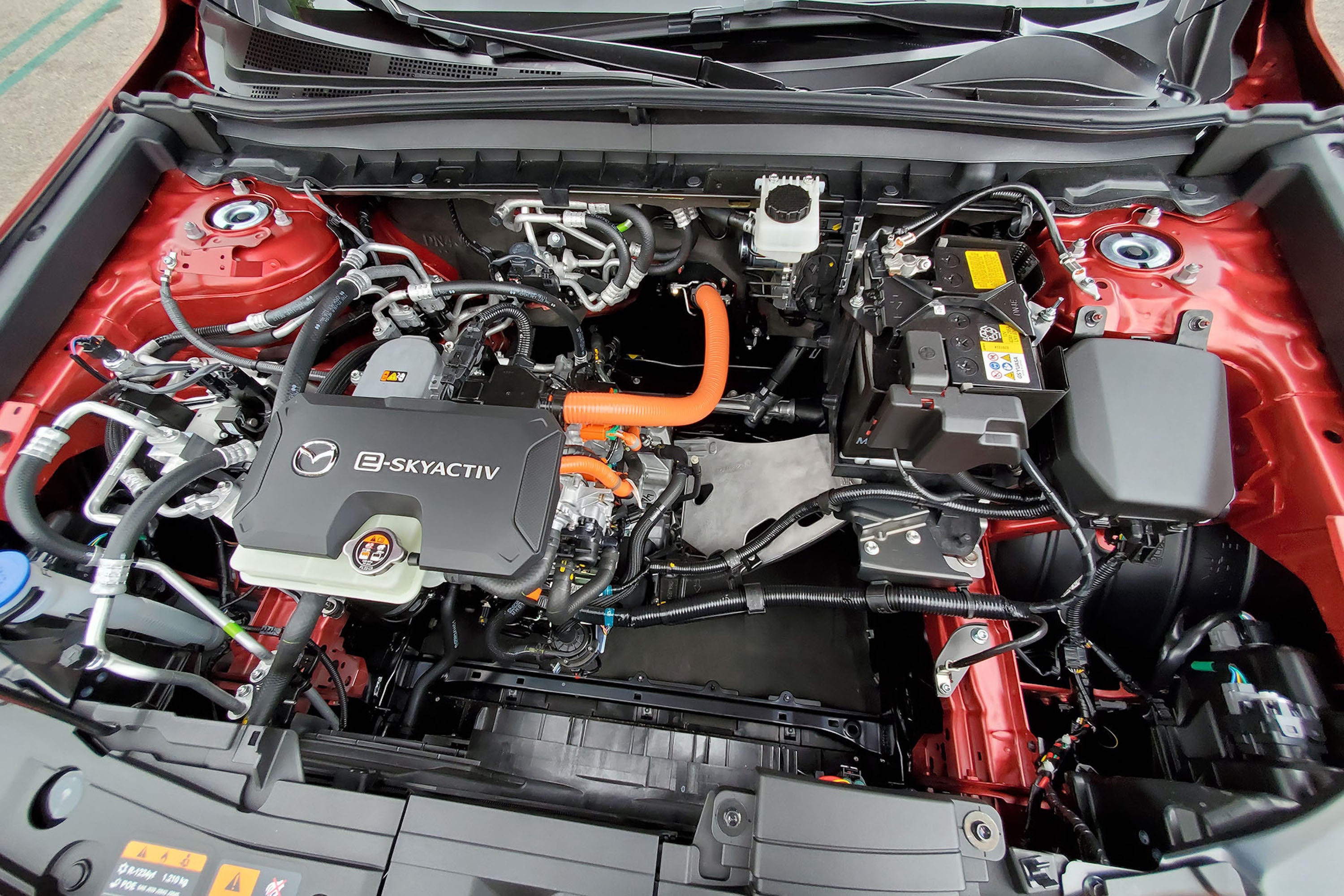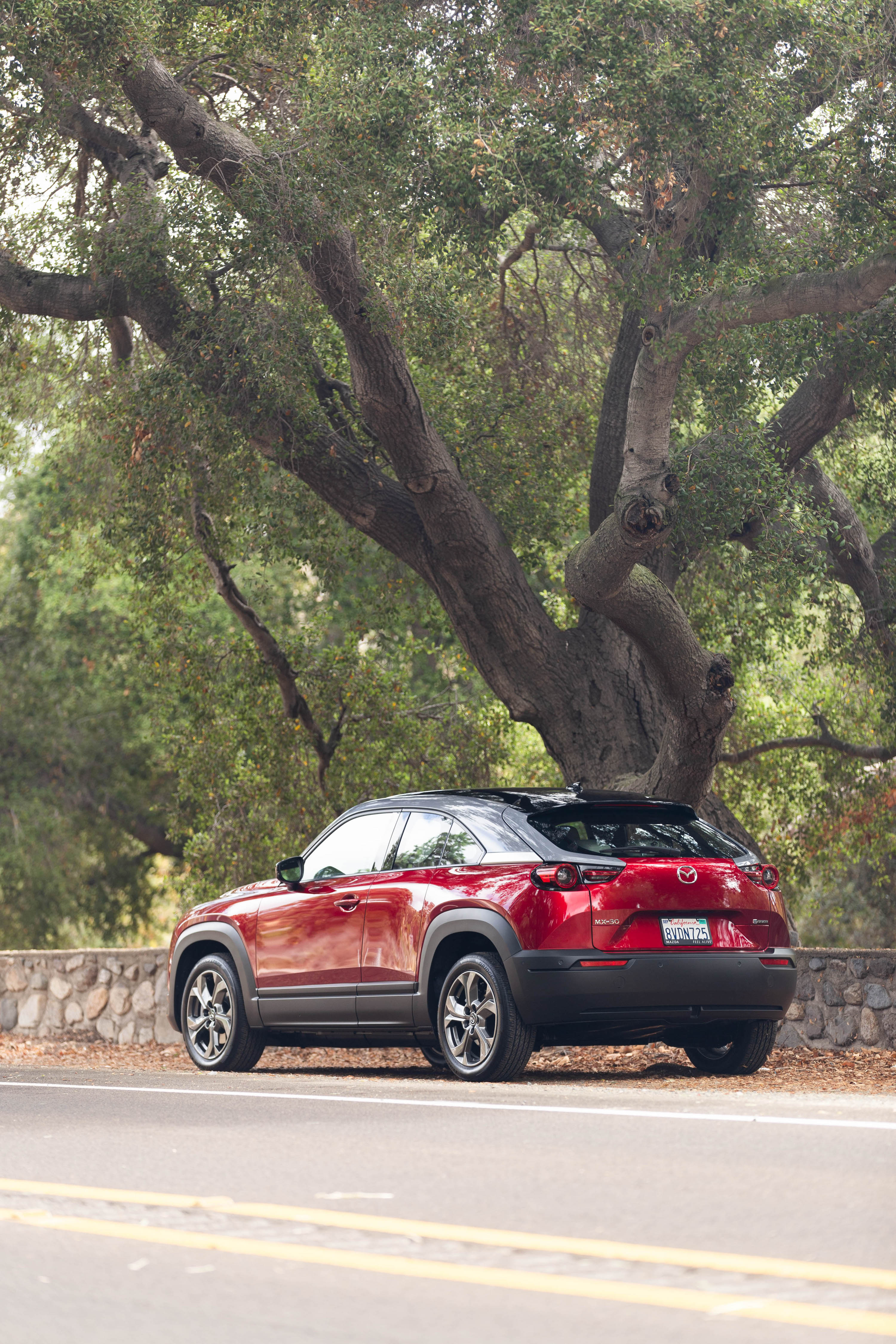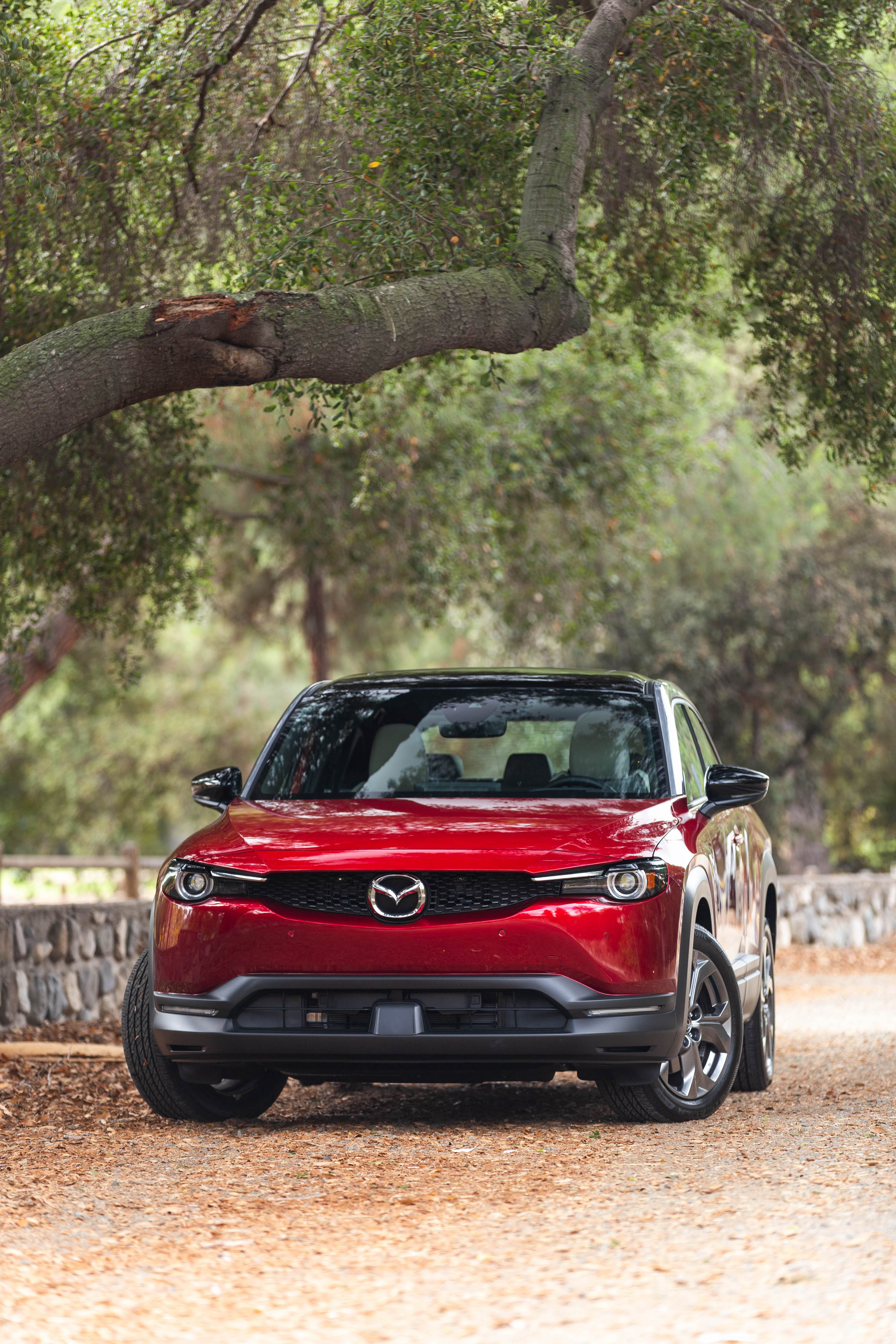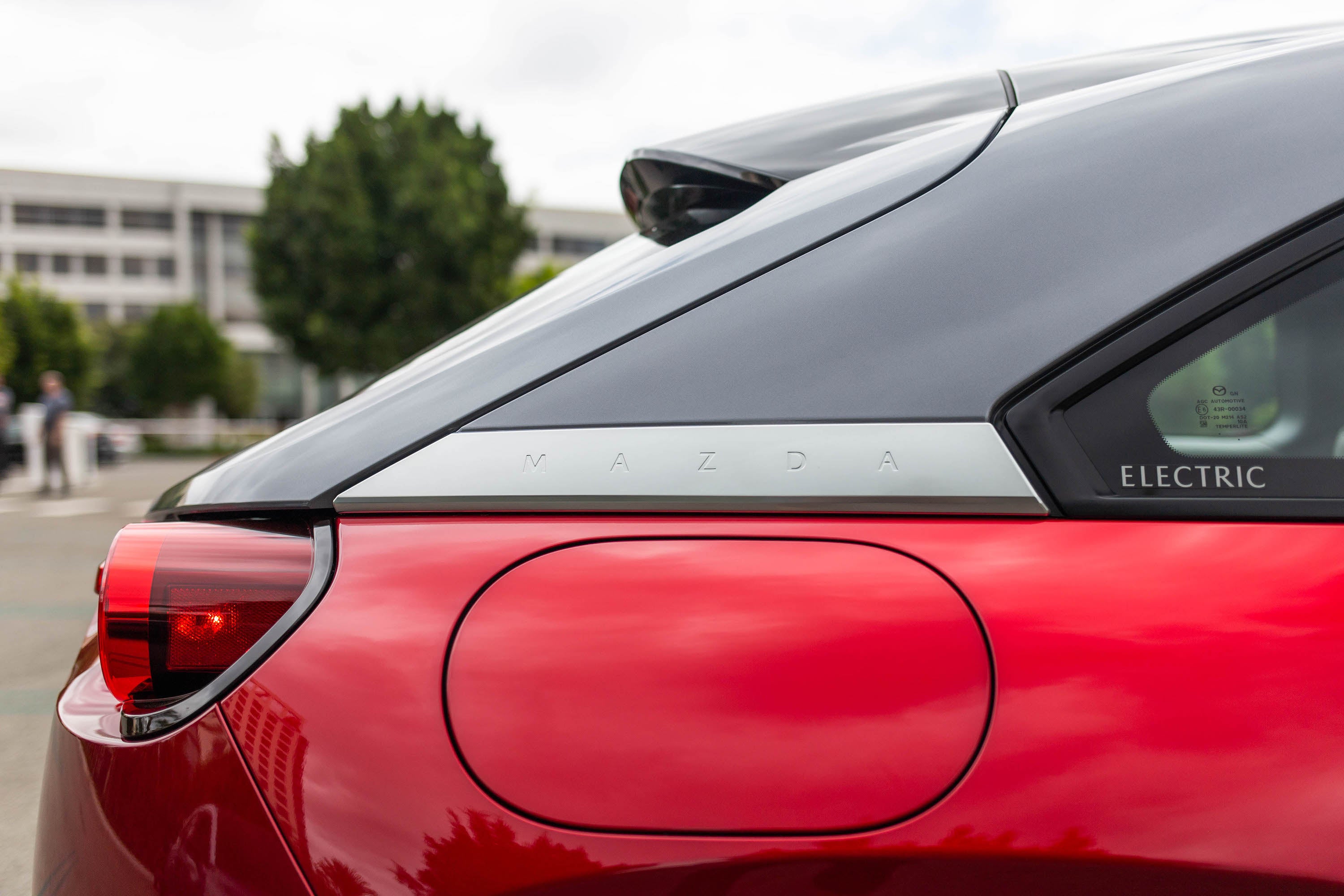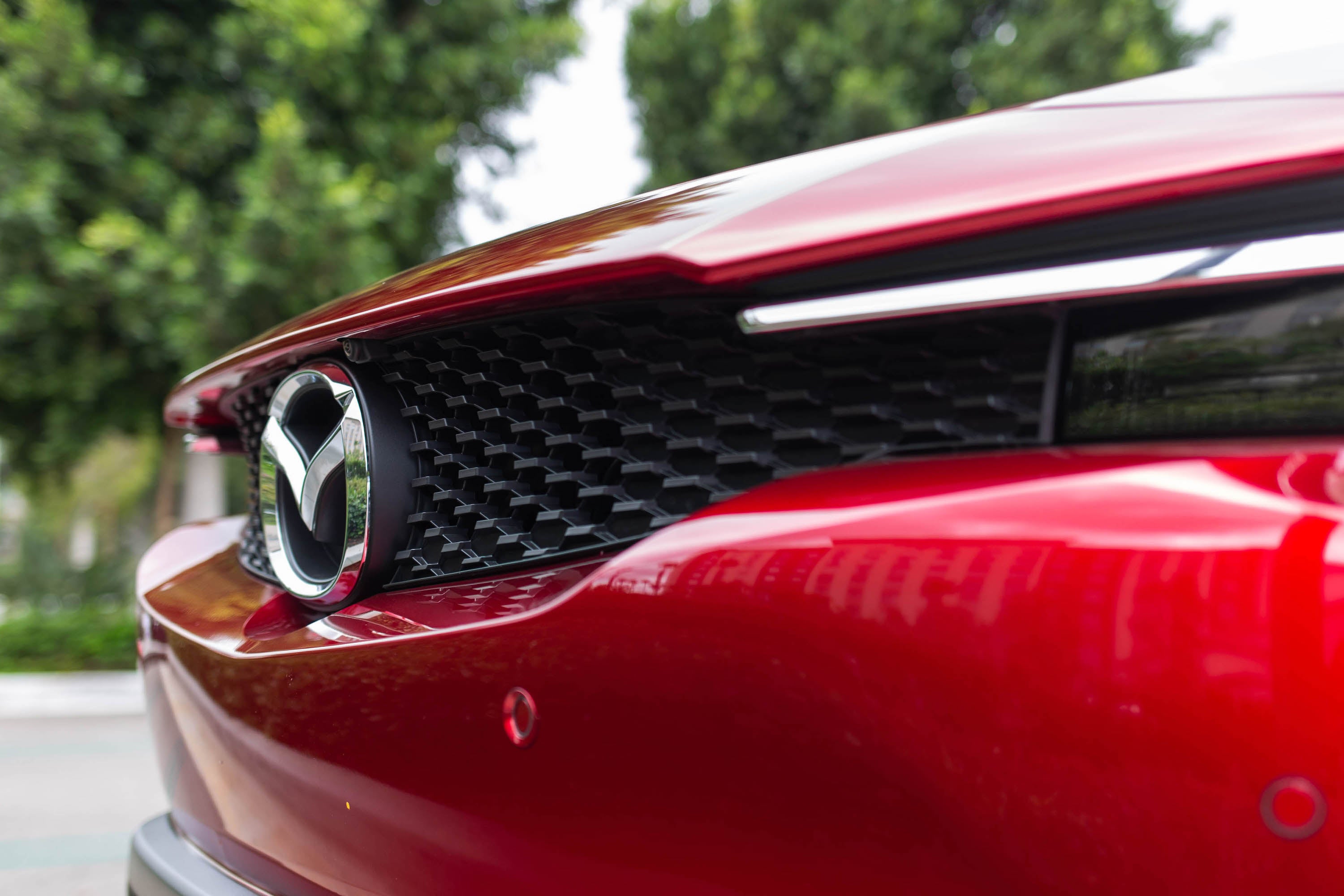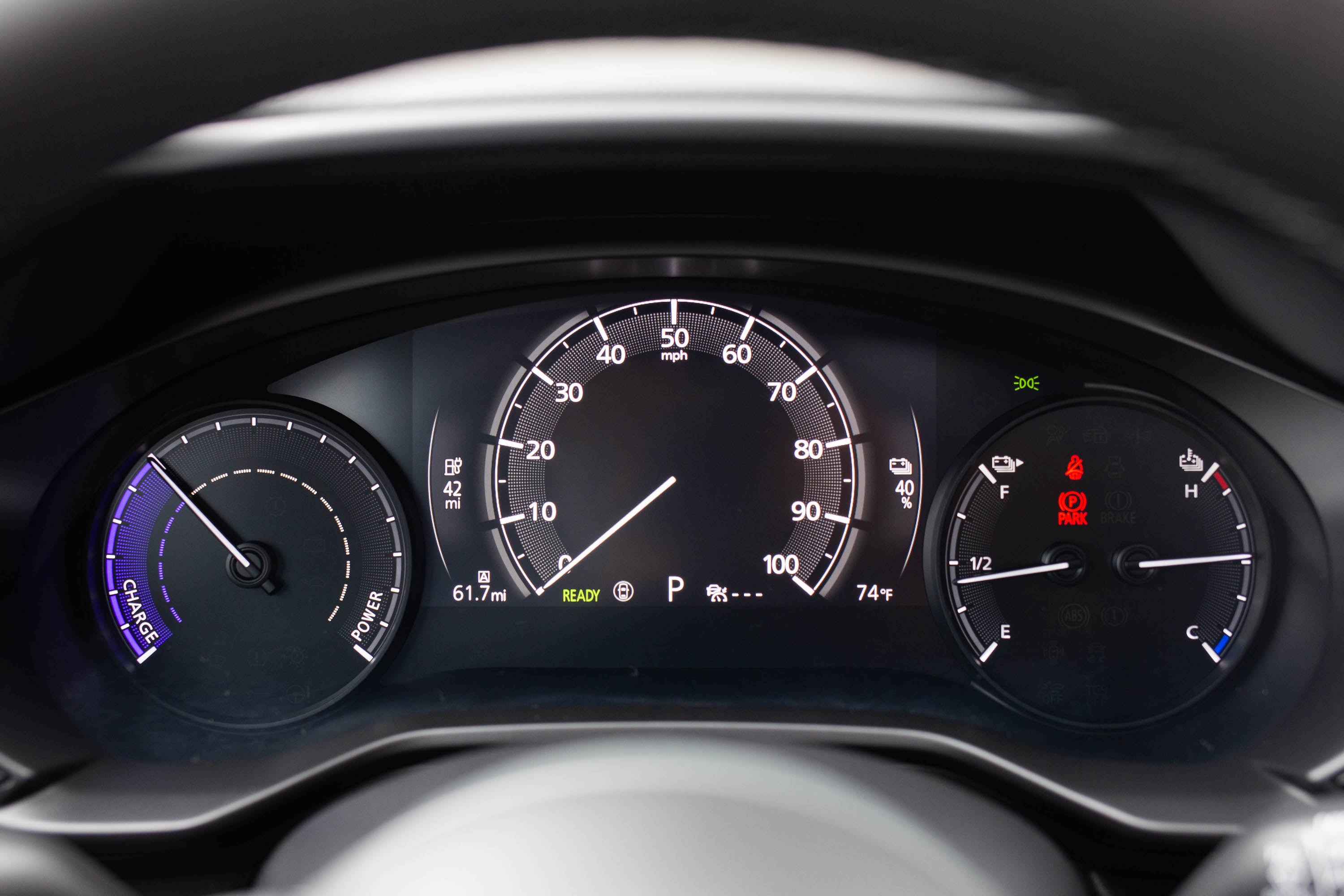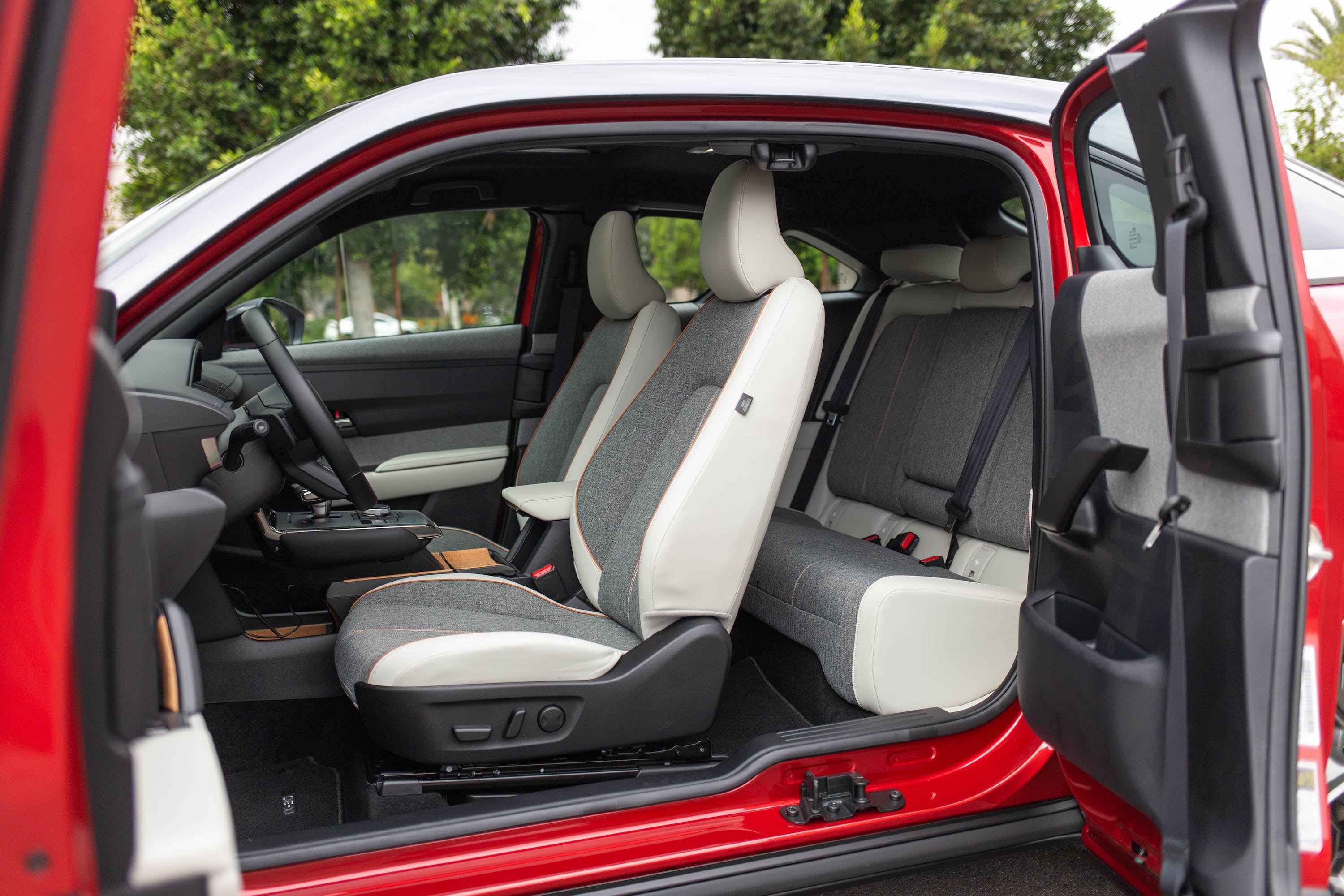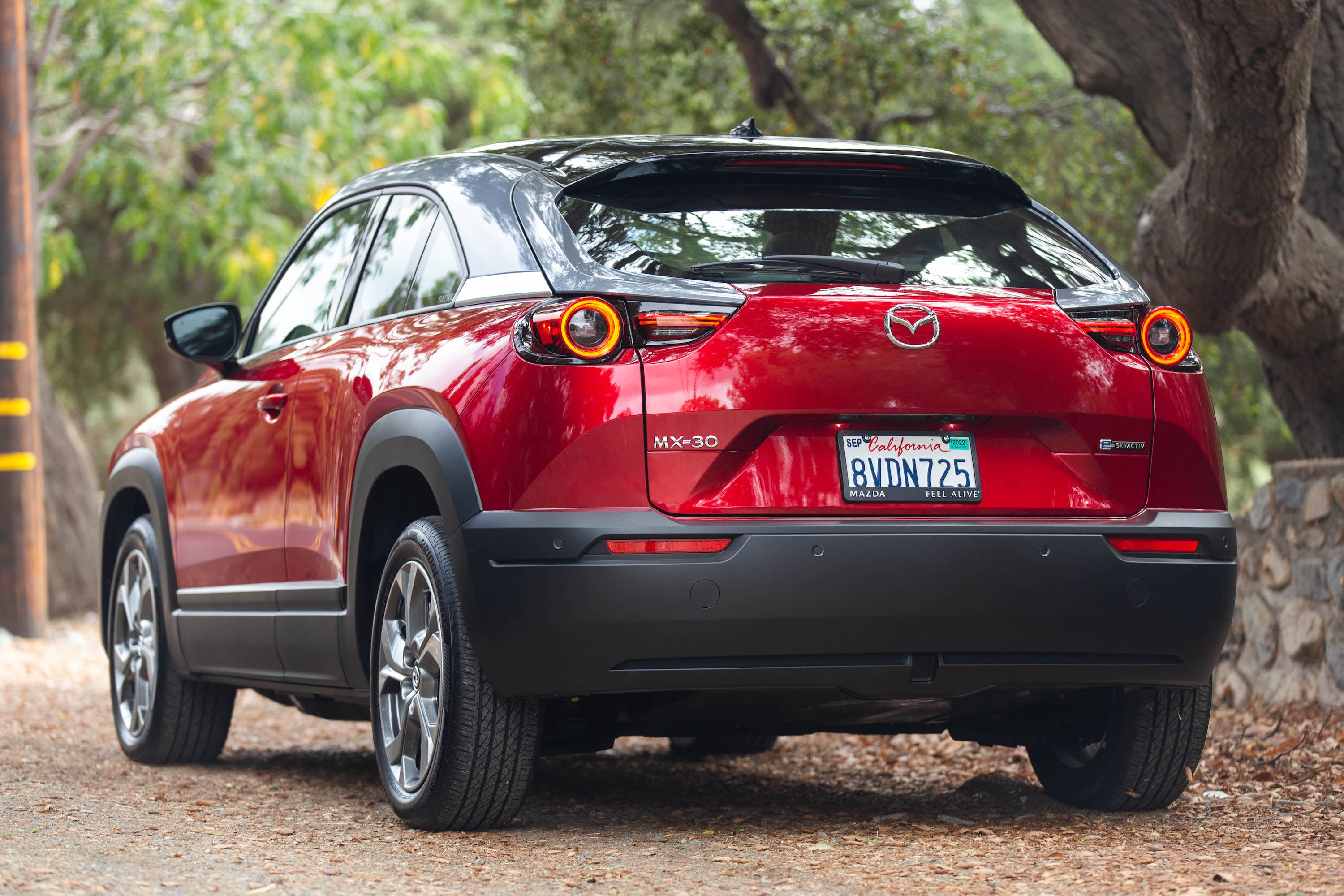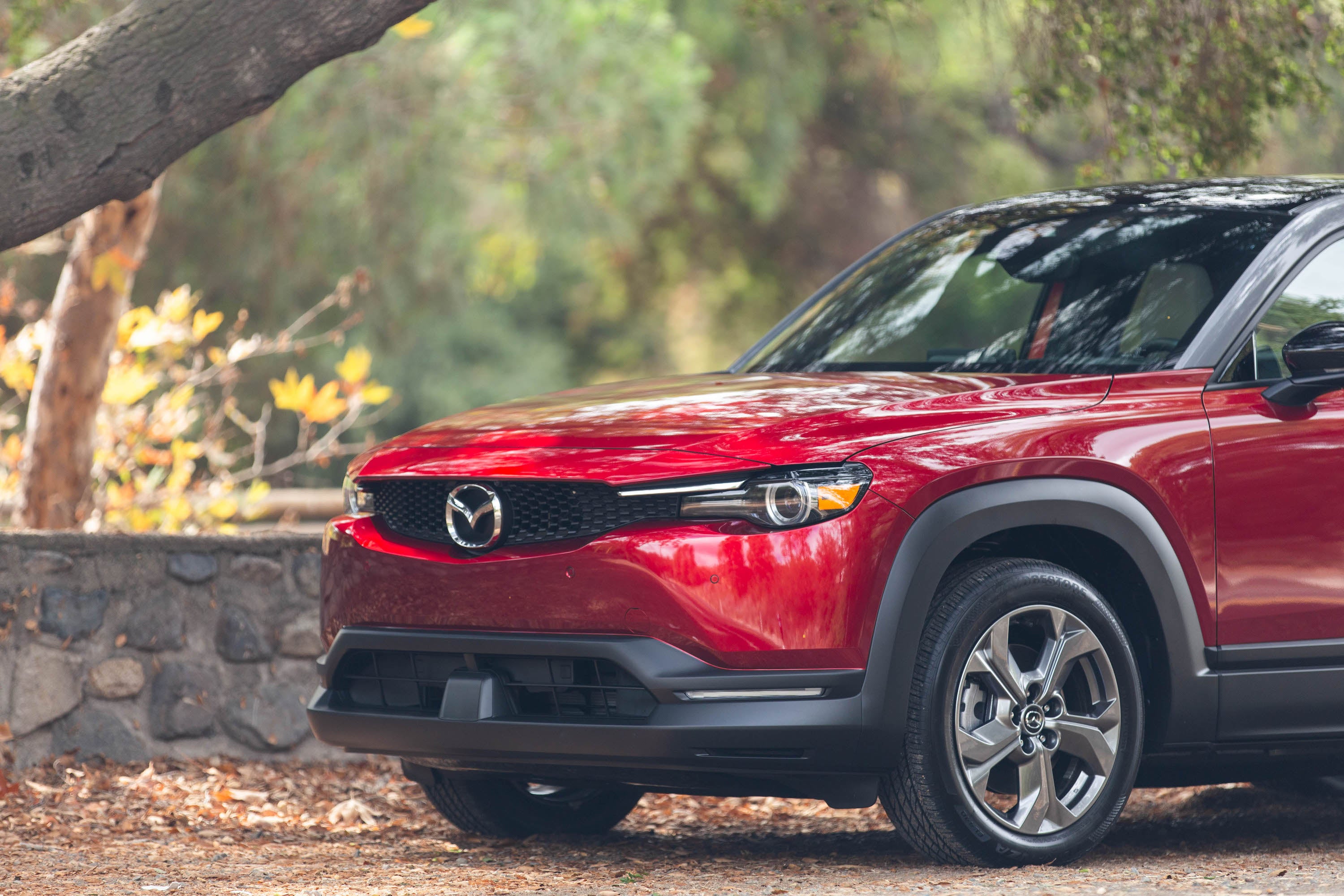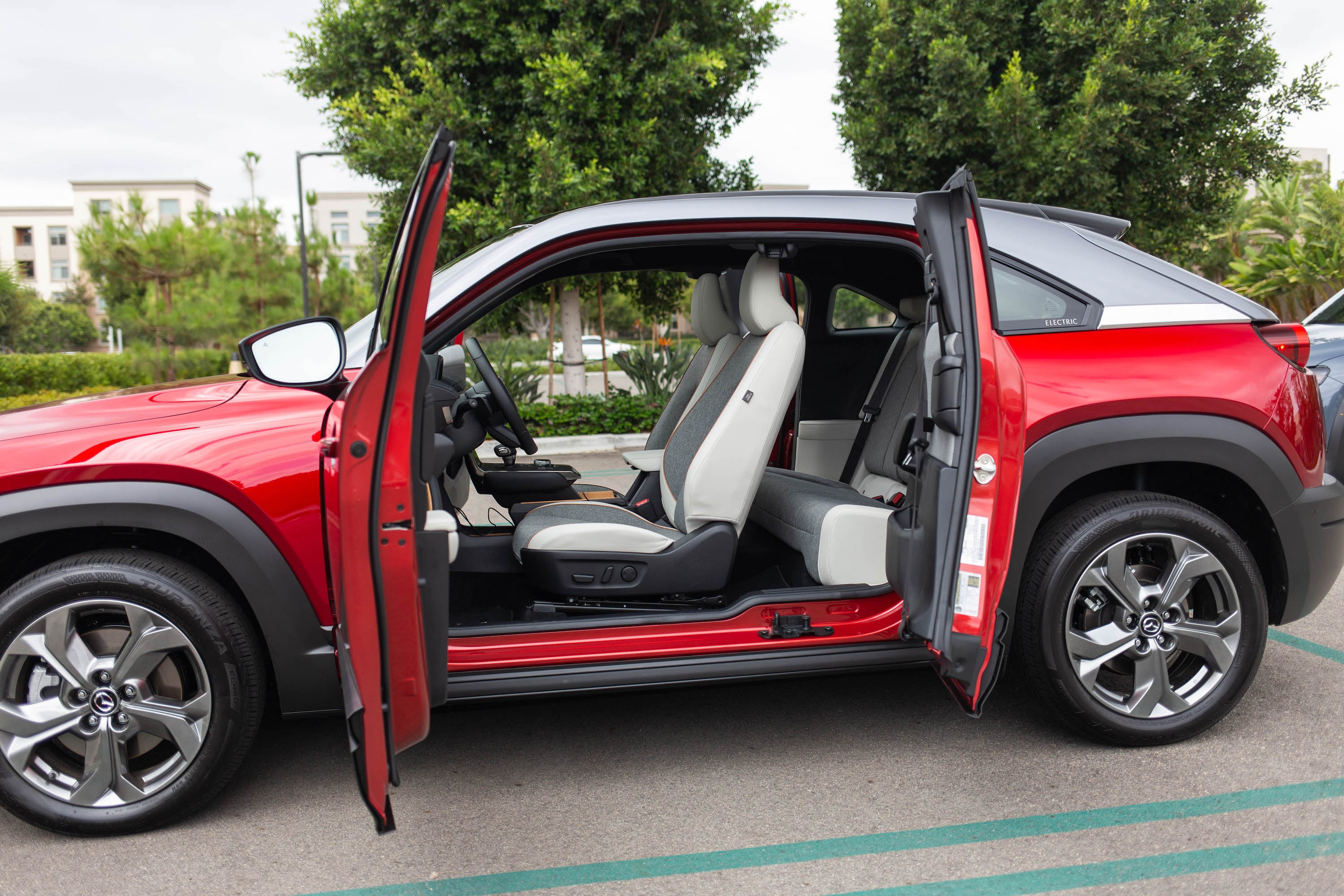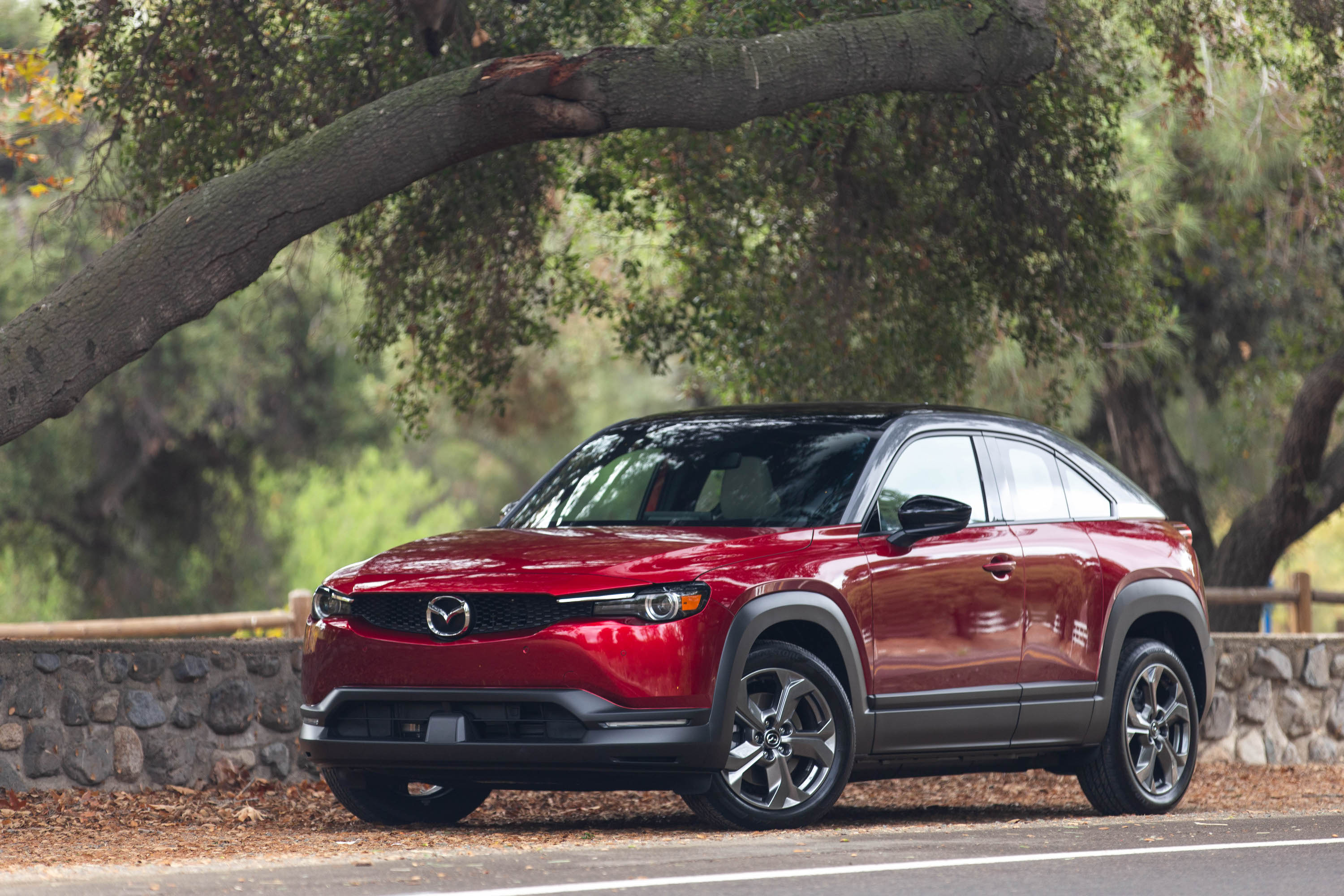More electric cars for consumers to choose from is a good thing. More small and moderately priced electric cars for consumers to choose from is a great thing. Not everyone needs or can afford the Porsche Taycans and Lucid Airs of the market, which is why the all-new 2022 Mazda MX-30 is important.
It represents Mazda’s first all-electric car in the North American market and, like everything else you can expect from the Japanese automaker, it’s handsome, has a stylish interior, and is pleasant to drive. That last aspect is especially important, as EVs by and large all drive pretty similarly. But Mazda worked in little points of tactile feedback that do make the MX-30 more memorable than others from behind the wheel.
2022 Mazda MX-30: By the Numbers
- Base price (as tested): $34,645 ($38,650)
- Powertrain: 35.5-kWh battery | 80.9-kW motor | 1-speed transmission | front-wheel drive
- Horsepower: 143
- Torque: 200 lb-ft
- Range: 100
- Charge time: 36 minutes for 20 to 80 percent with Level 3 charging
- Curb weight: 3,655 pounds
- Seating capacity: 5
- Cargo volume: 21.04 cubic feet
- EPA fuel economy: 98 mpge city | 85 highway | 92 combined
- Quick take: A little small on the inside. A little expensive for what you’re getting. But it looks and drives great. In other words, it’s a modern Mazda. Only with 100 miles of range.
I’ll spoil this review for you a bit. Despite the car driving well, it must still fight a massive uphill battle in terms of price, range, and intended buyers. But hey—maybe you’re that buyer.
Little Egg-Shaped EV
Based on the Mazda CX-30’s subcompact platform, the MX-30 utilizes a floor-mounted 35.5-kWh battery, an 80.9-kW motor, and front-wheel drive to produce a claimed 143 horsepower and 200-pound feet of torque. Against the CX-30, the MX-30 has slightly more cargo volume, about five inches less of rear legroom, and weighs 267 pounds more.
Immediately, its 100-mile range drew skepticism, but as Mazda envisions the car to be for young couples living in the city, it’s holding firm to its belief that this is a completely usable amount of range for commuters who have chargers on both ends of their commute. (I mean, what’s the alternative? “Mazda Agrees That 100 Miles of Range Isn’t Enough”? That’d be a hell of a headline.)
And because the MX-30 rides on something Mazda calls “scalable EV architecture,” it also means stuff like rotary range extenders and hybrids are within its future. There’s certainly room in the currently largely unoccupied engine bay for more!
The MX-30’s looks are only very subtly different from the CX-30’s, with the two-tone roof probably being the biggest giveaway. At the base of the C-pillar is a brushed silver plaque that reads “Mazda” and the corporate grille has been slimmed down and pushed inward. There’s still the familiar black cladding along the side skirts and wheel arches.
The interior is outfitted in environmentally conscious materials, such as cork on the door handles and on the center console, door cards made from recycled plastic bottles, leatherette, and seat fabrics made from recycled threads. The test car used an attractive light-gray-on-white color motif that contributed to an overall beachy feel to the interior.
But the rotary-powered Mazda RX-8 sends us its regards with the MX-30’s homage to suicide doors (or “freestyle doors” if Mazda’s concerned). It’s the exact same design: The front door closes on top of the rear-hinged rear door to protect passengers from side impact. It’s convenient for loading up the rear seat and I dug being able to open and close the rear door without leaving the front seat, but the setup is not without its issues.
For example, the front seatbelts are attached to the rear doors, so you have to unfasten them in order to comfortably open the doors. And once you’re seated in the back row, you can’t really reach the front door to open it to then open the rear door to let yourself out, as the rear door can’t open unless the front one is. I get why this design didn’t catch on much beyond the RX-8, but I refuse to remove these rose-tinted glasses; the MX-30’s doors are cool.
Expectedly Mazda
Perhaps owing to the MX-30’s decently light 3,655-pound curb weight, but it was indeed enjoyable to drive. Coupled with its lower center of gravity, it was easy to hustle through some curvier roads, though a slight whiff of body roll served as a reminder that I was still driving a crossover. But it redeemed itself with the steering.
Obviously, it was still an EPAS system and was expectedly numb because of that, but it was weighted in an agreeable way that bolstered confidence. It was loads better than the Polestar 2’s numb and light steering. I felt good about nosing the car into sharper turns and unwinding sharply it after coming out of those turns—it responded with healthy and rewarding heft.
Similarly, the brakes were some of the friendliest I’ve ever felt. They grabbed smoothly and slowed the car down in a linear and predictable way—impressive for an EV that also benefits from regenerative braking. You can set the severity of that regenerative braking with the use of paddle shifters, too. The lightest setting is barely perceptible and the car gradually coasts to a stop like any automatic and gasoline engine-equipped vehicle. The most aggressive setting—the one I preferred to use—yielded a forceful sense of engine braking but could be disruptive to other passengers in the car.
On paper, 143 hp and 200 lb-ft of torque might not sound super impressive, but it got the MX-30 moving and awarded it a feeling of spunkiness. Winning drag races probably won’t be in the cards for you, but the instantaneous torque tricks your brain into thinking you’re going faster than you are anyway—a reasonable tradeoff. Maintaining highway speeds is easy; not much pedal input is needed. And in addition to the lack of engine noise, the cabin noise level was surprisingly quiet. The muted experience added an extra premium layer to everything.
As for small quibbles, the front seats were comfortable but could have used a bit more lumbar support and the rear seats were alright for someone of my five-foot-three stature. Anyone with longer legs will probably have a problem fitting comfortably. Rear visibility wasn’t the greatest, however, and the infotainment screen annoyingly still isn’t a touchscreen. The in-car navigation also doesn’t have a built-in charger locator, so you’d have to rely on your phone to find the nearest one.
But these are minor annoyances in what was otherwise a very amiable car to drive. It was easy to forget it was an EV, which I’m sure was the whole point.
Let’s Talk About That Range
So, yeah. The range. At 100 miles, it’s not a lot. The Mini Cooper SE makes more from a slightly smaller battery, although it’s not as practical as the Mazda. But at this price point and size, you also have to take the Chevy Bolt, Nissan Leaf, and Kia Niro EV into account as well, and they offer 259, 149, and 239 miles of range, respectively.
When asked during the MX-30’s media preview event why the battery isn’t bigger, a company rep said that this was the maximum amount of battery it could fit in the CX-30’s platform. More range could come as battery capacity increases, they said, but this is what we’re getting for now.
And as for why the car is front-wheel drive since the CX-30 platform has seen all-wheel drive in other setups? It comes down to packaging and platform, according to another rep. The platform was designed to be front-wheel drive; all-wheel drive would have made everything heavier and more expensive, they said. My own understanding of EVs also informs me that an all-wheel-drive setup would have further eaten into the range as well.
Mazda’s flacks called the MX-30 “a run-around town commuter vehicle” for young, urban couples, but most young, urban couples I know—in New York, LA, Boston, and Denver (and myself included)—live in apartment buildings and complexes. We don’t have the privilege of driveways or private garages, so there simply isn’t anywhere to charge an EV easily or conveniently. And what happens when we do want to take a trip that’s outside of the car’s range capabilities?
On this front, Mazda is offering two solutions.
First, with its ChargePoint partnership, Mazda is offering a $500 credit that owners can use toward public charging or to help buy a Level 2 at-home charger. It’s also offering three free years of its MX-30 Elite Access Program, which as our own Peter Holderith has reported, allows MX-30 owners to borrow any Mazda vehicle from any Mazda dealership for up to 10 days a year. Mazda calls this option “environmentally responsible” because those owners can get away with only using a gasoline-driven vehicle for a small fraction of the year.
Both are nice ideas. But I can’t imagine my garage being down with me installing a charger on their premises. And while the Elite Access Program is cool—get dat weekend Miata!—it can also be interpreted as an admittance that Mazda knows its own EV has a pretty severe Achilles’ heel.
Verdict
Standard MX-30s come with 18-inch silver alloy wheels, lane-keep assist, lane-departure warning, and cruise control, which can all be had for $34,645. Mazda put me in the MX-30 with the Premium Plus Package, which had blind-spot assist, blind-spot monitoring, 18-inch bright-finish alloy wheels, a Bose audio system, and a 360-degree view monitor. With the extra Soul Red Crystal paint, the total vehicle price came to $38,650. The cars are eligible for the federal EV tax credit, but be sure to read the fine print on that.
I spent about 90 minutes behind the wheel of the MX-30 and I liked it a lot. (The route Mazda picked out for us was around 62 miles in total.) I found it to be a fun little EV with good looks and cool doors. It presented itself with all the normalcy of an internal combustion car, which is what you want in an EV aimed at everyday people.
I just don’t know who, exactly, this car is for.
I feel that I’ve adequately disproven Mazda’s line about it being for young urban couples. Most urban spaces have public transportation and that’s oftentimes the cheapest and most efficient way of getting around. You don’t need to find parking on the other side of that commute to work, for example. And with a $34,645 starting price, you could get the objectively good CX-30 Turbo easily, which is more powerful and makes use of the very robust and very available gas station network that’s already in place. Our charging infrastructure is coming along, but it still has a pretty long way to go.
Oh, and the MX-30 will go on sale in California first. The rest of the states will come later. Mazda said this was because California has the strongest demand for EVs, but I also suspect it’s because the state has the most robust public charging network as well. Put your best foot forward and everything.
As with most EVs, the MX-30 makes sense if you have a home charger, don’t do a ton of long-distance commuting, and have a second gasoline car to fall back on when you do. Maybe that describes someone who works from home and runs only local errands. The fact that the MX-30 is a crossover and not a hatchback probably makes it marginally more appealing for most mainstream consumers, but when you factor in the low range and price for that range, it probably won’t be that appealing. It feels unfair, but I can’t help but hear whispers of compliance car breezing across my mind.
Mazda says more electrified offerings are on the way and I eagerly await them. From it, I can consistently expect cars with interiors that punch above their weight and that are refreshing to drive. Though the MX-30 that’s currently leading that charge could do with improved range, it’s still a promising glimpse at what’s to come.
Source: Read Full Article
